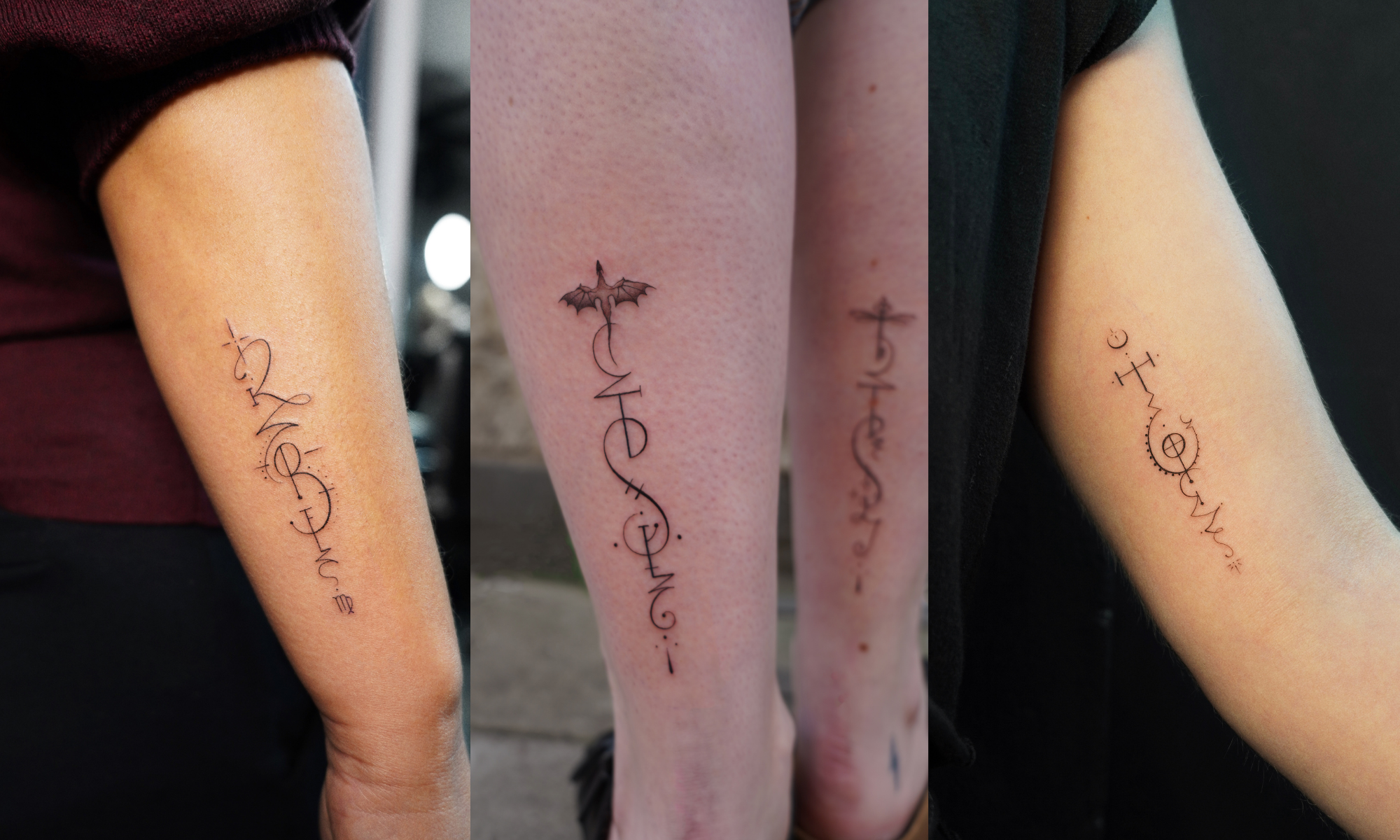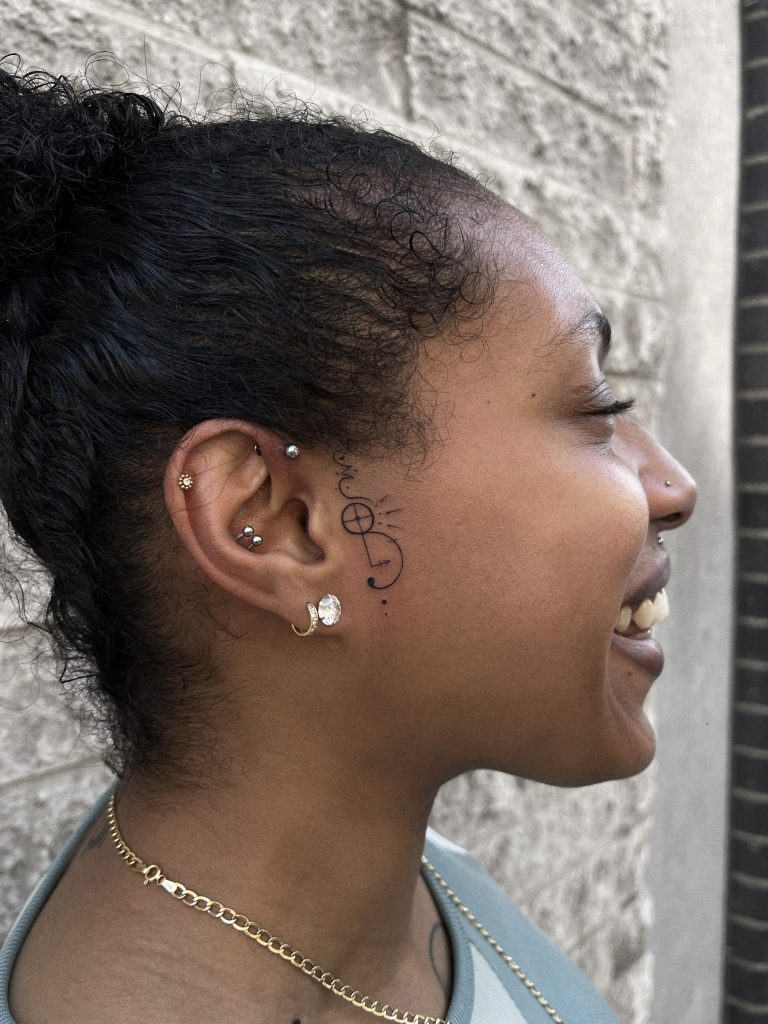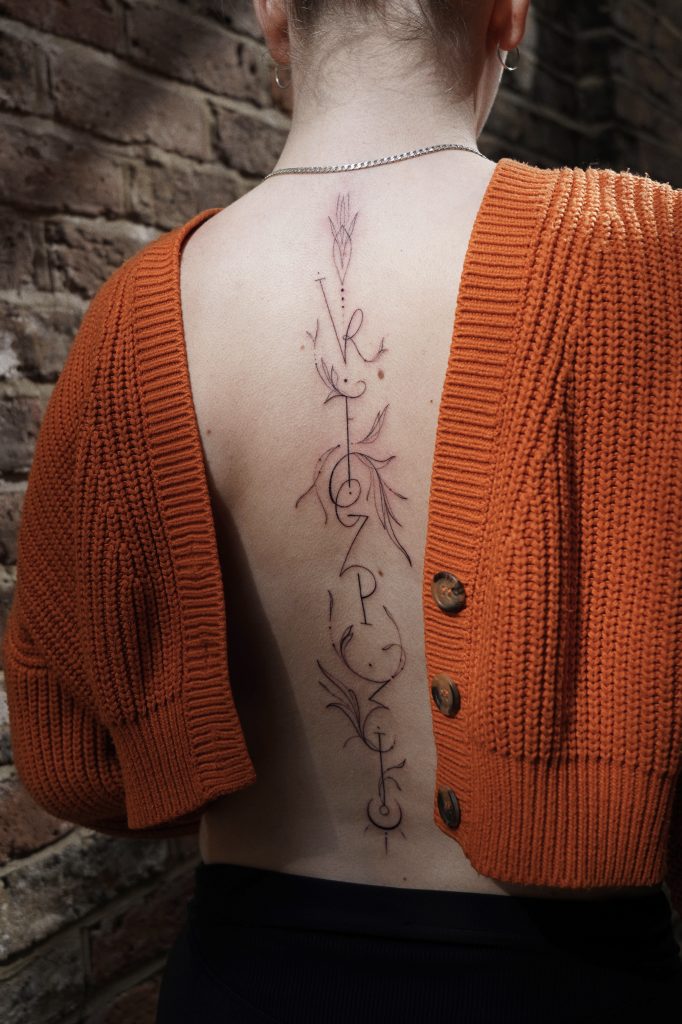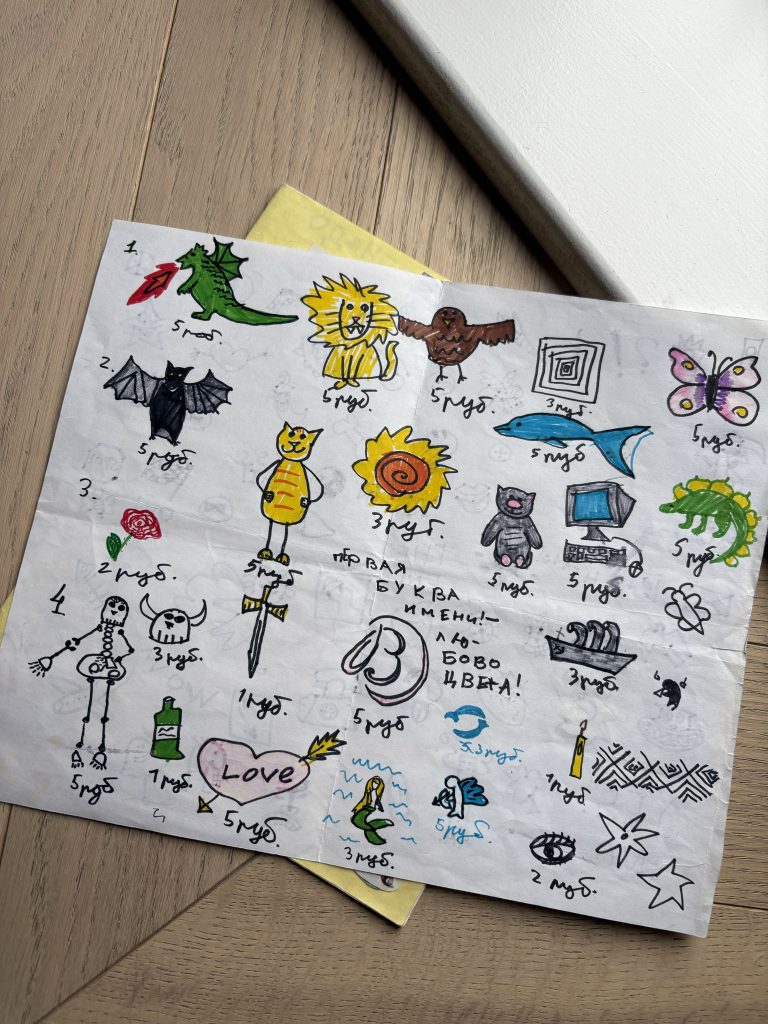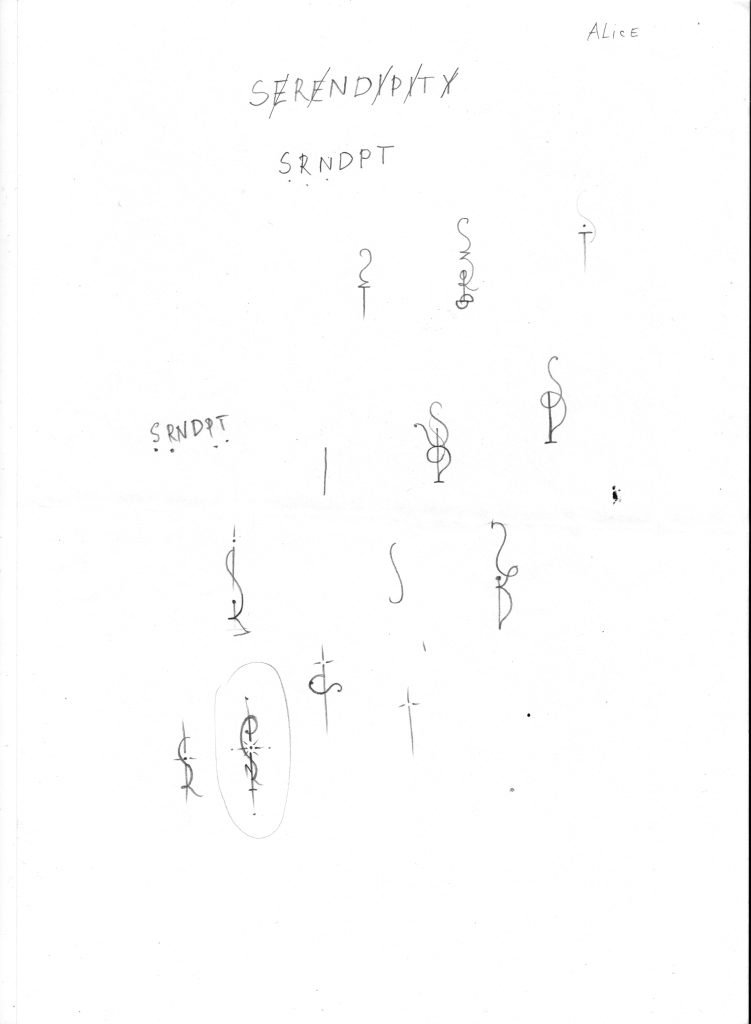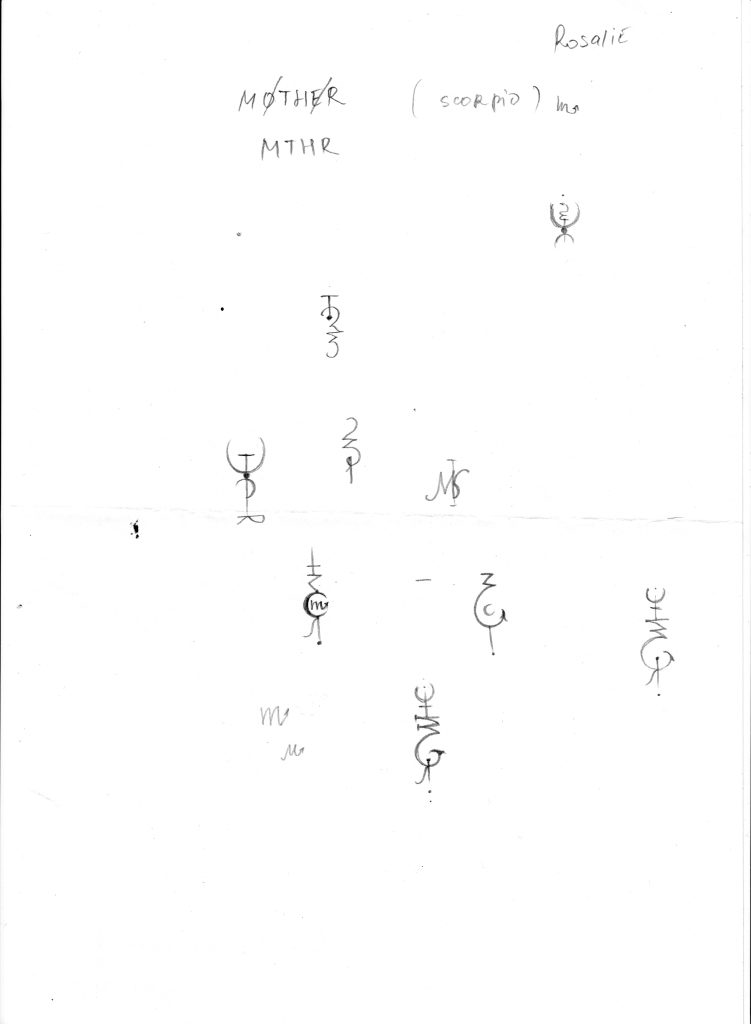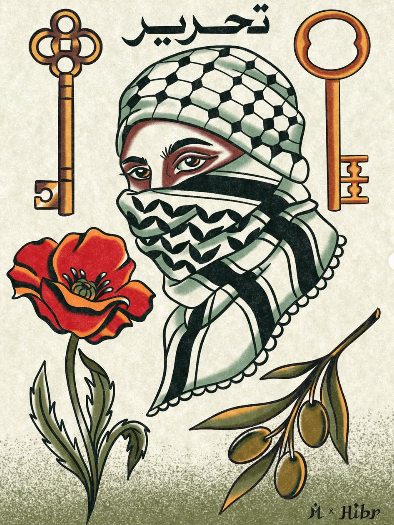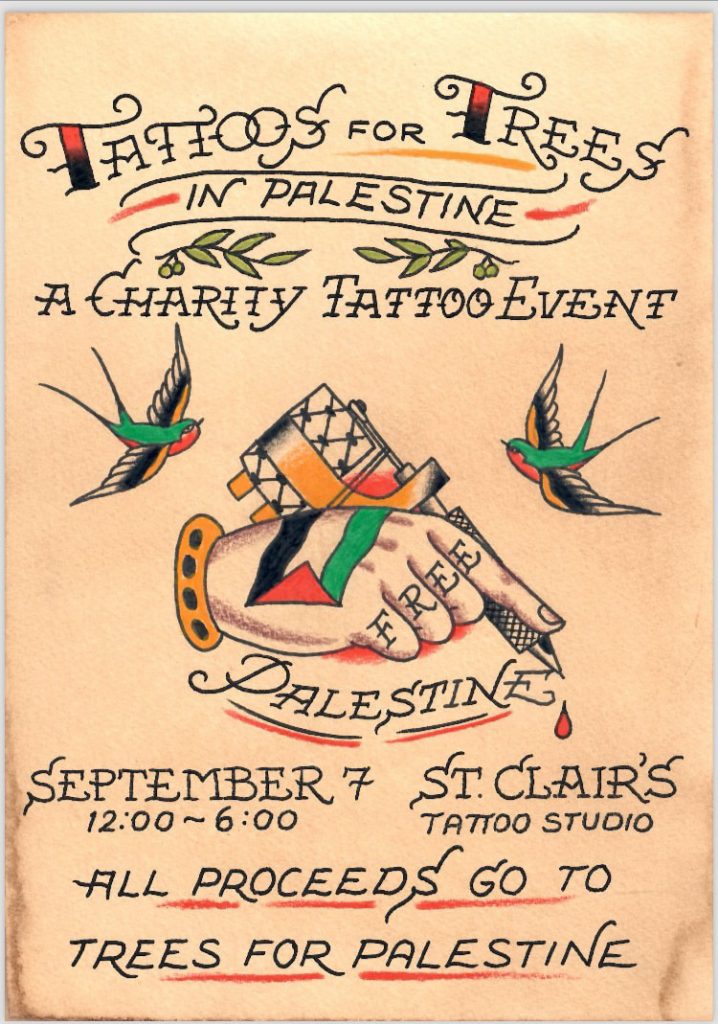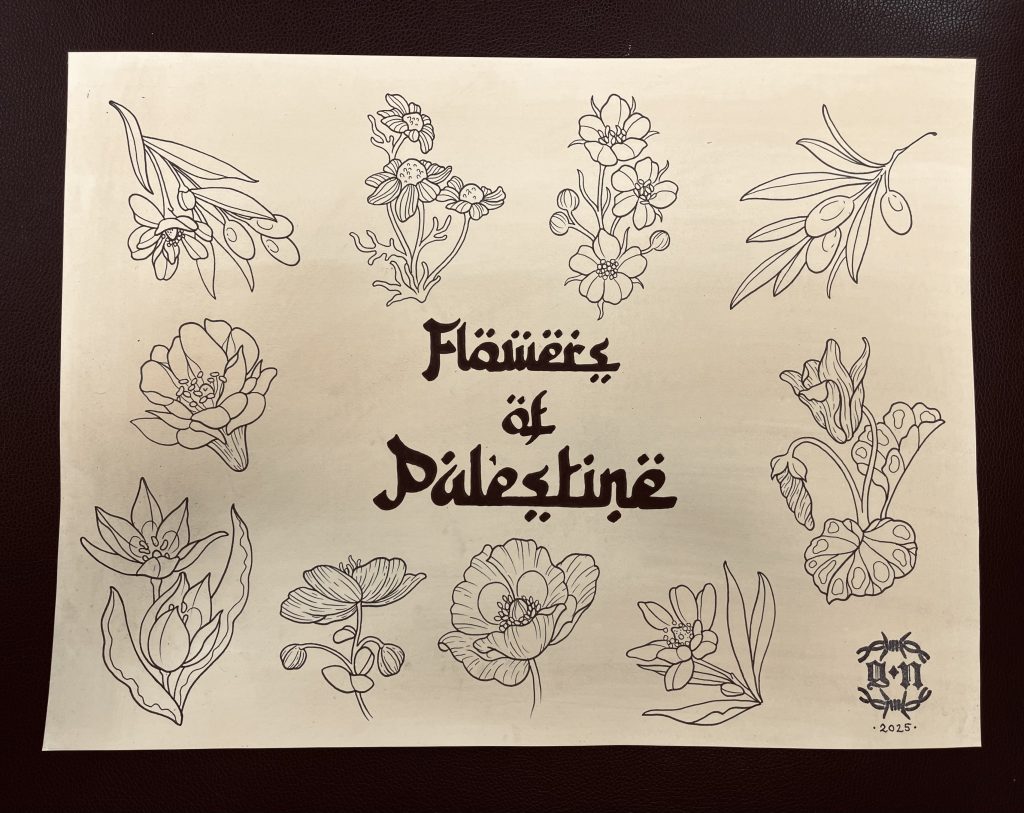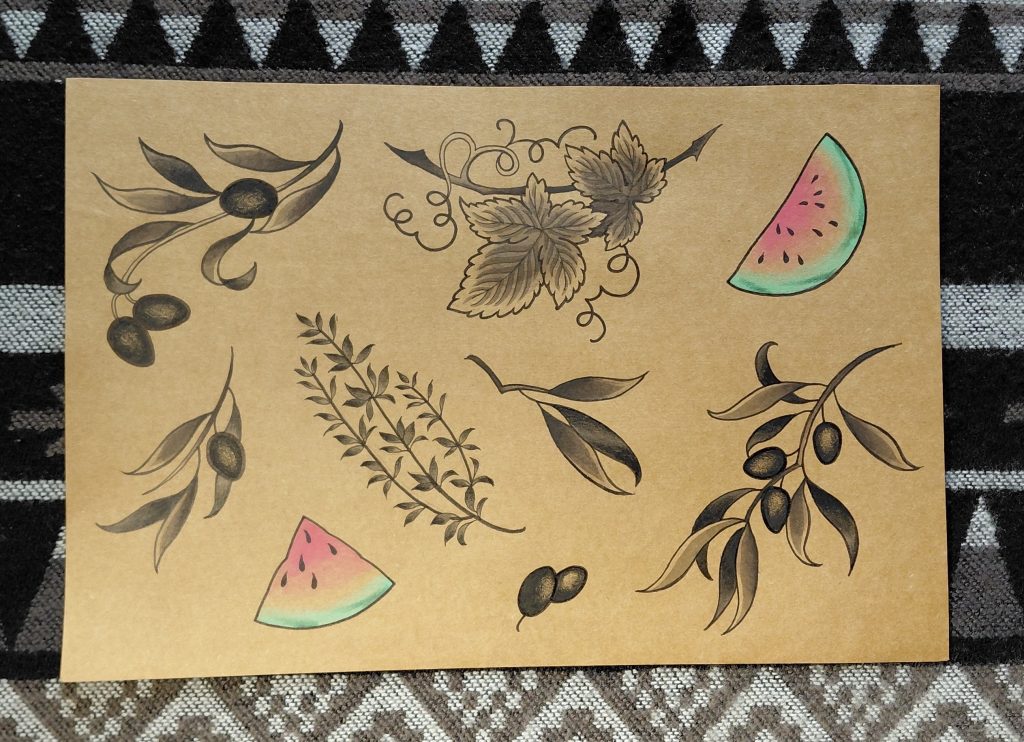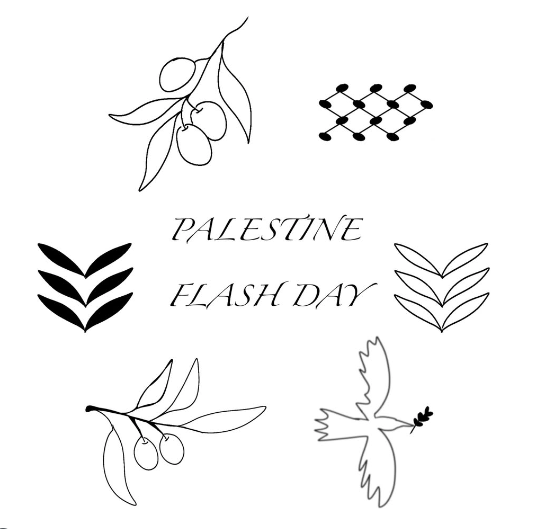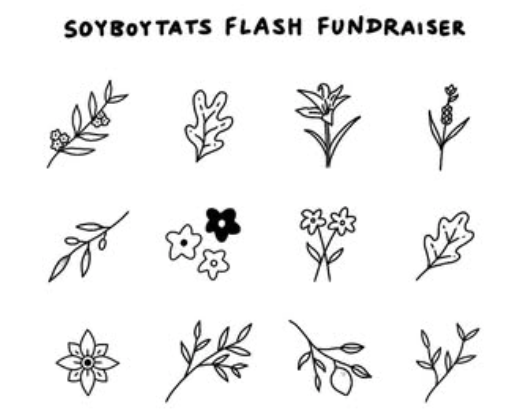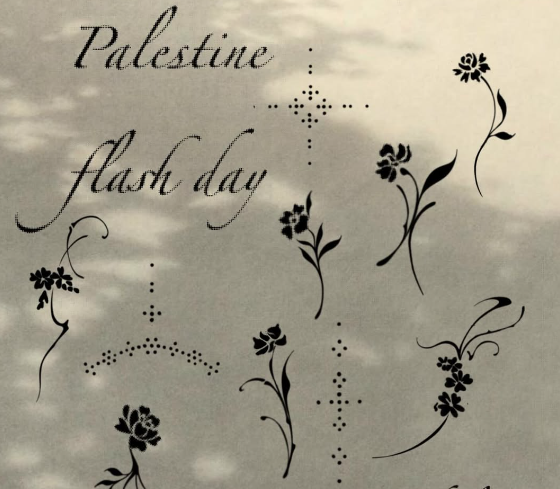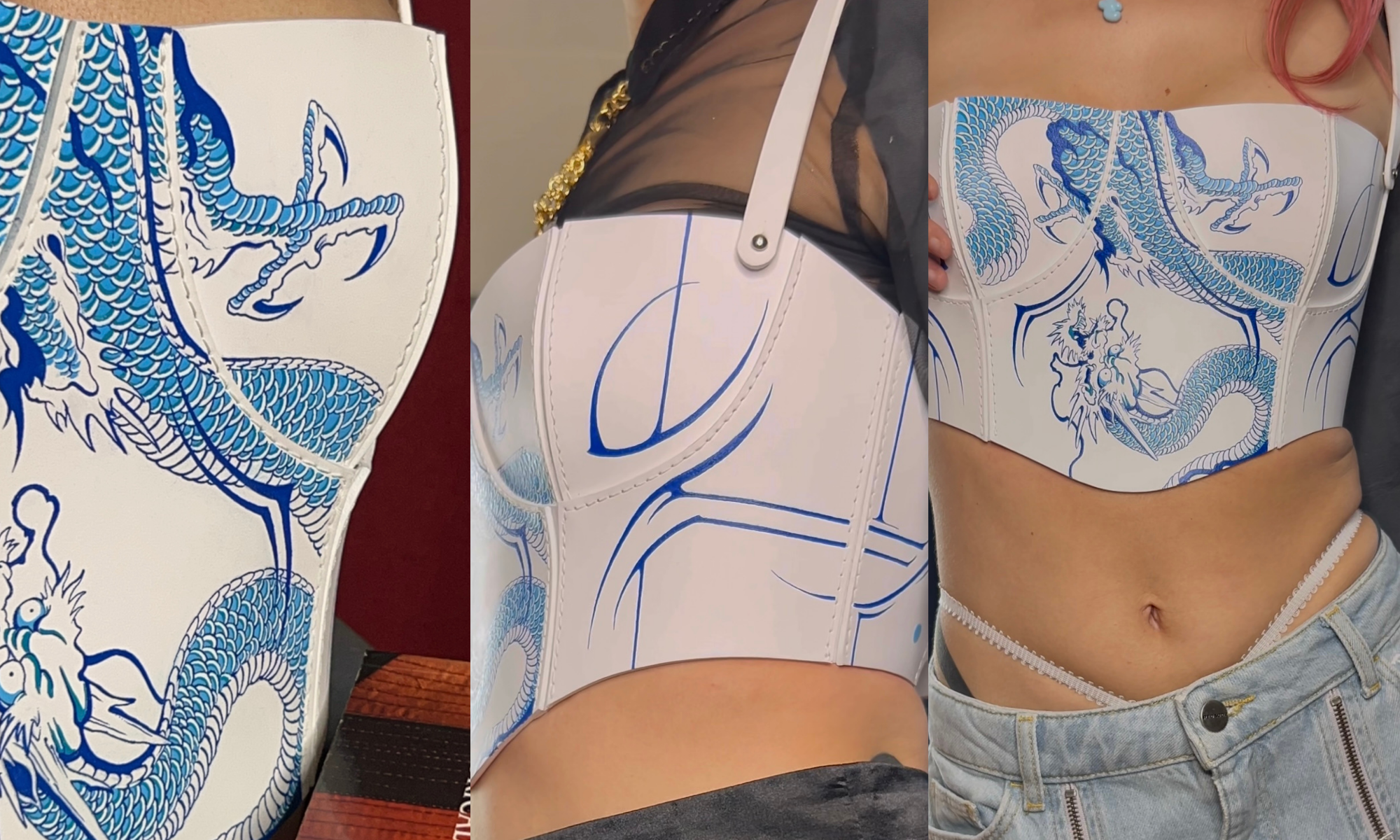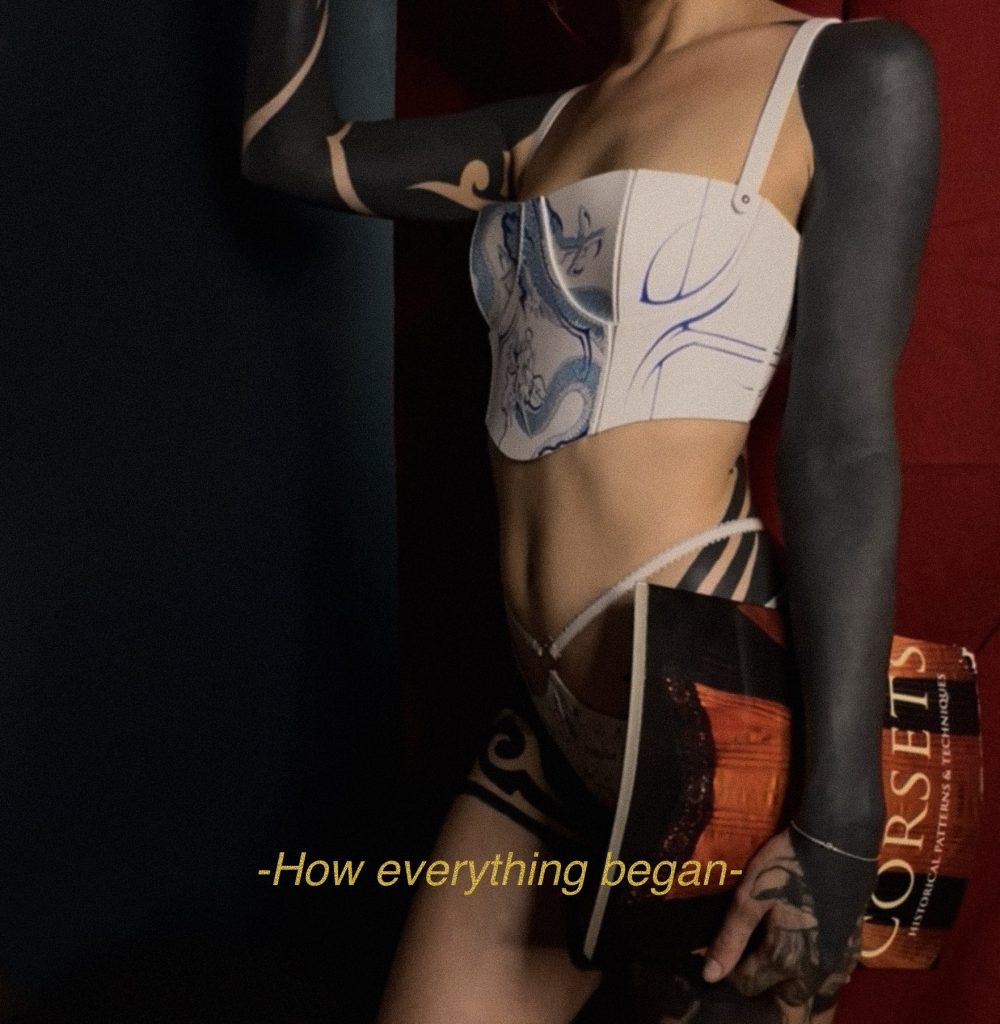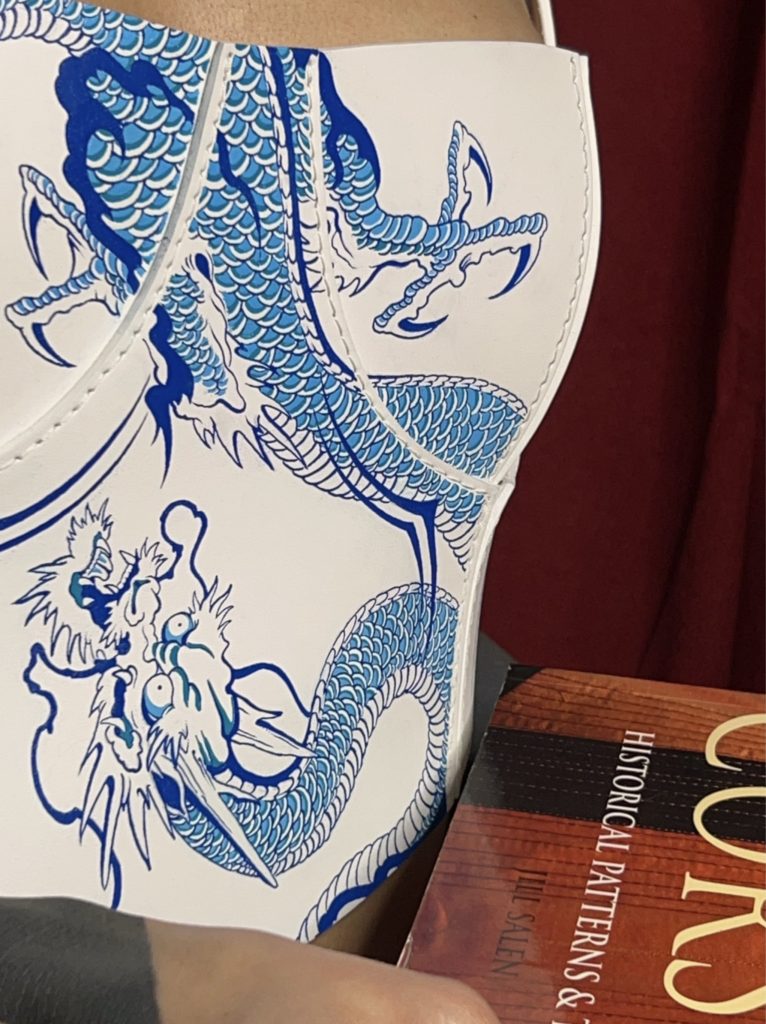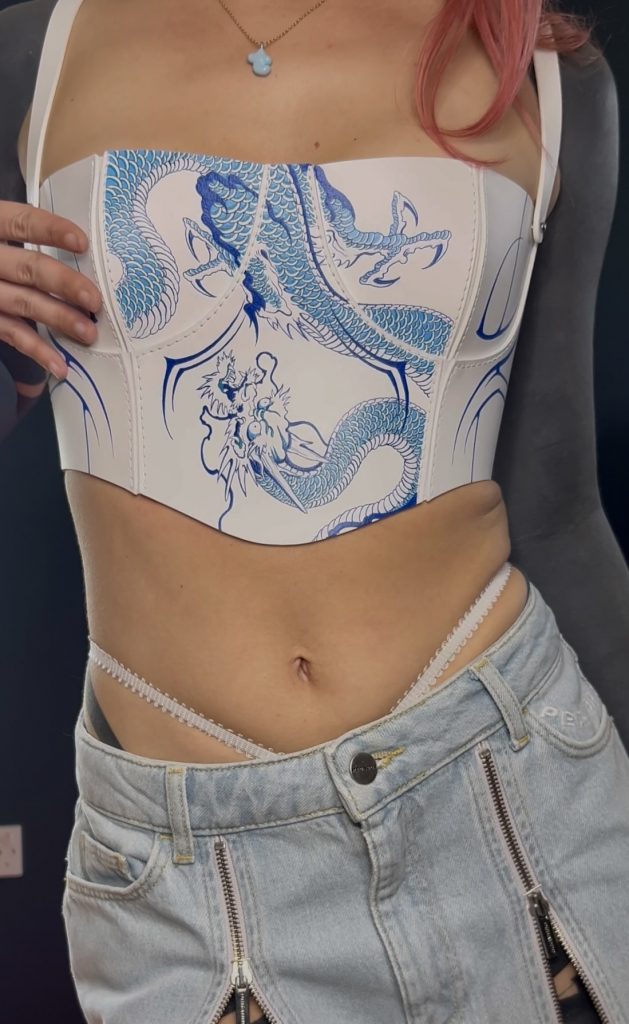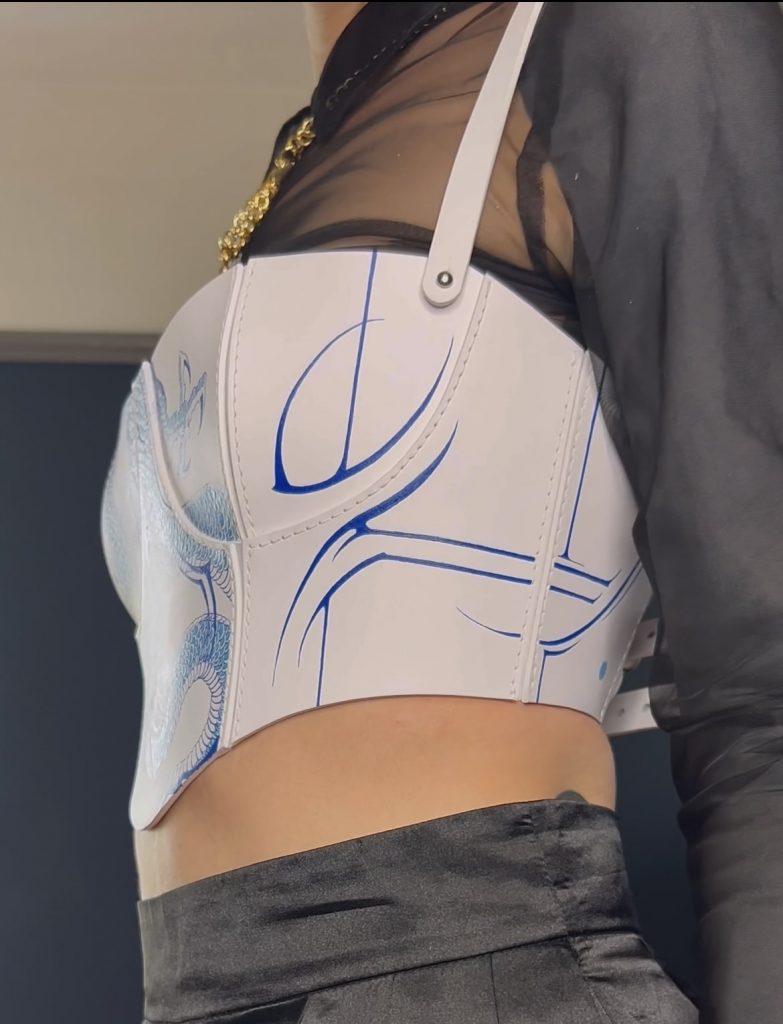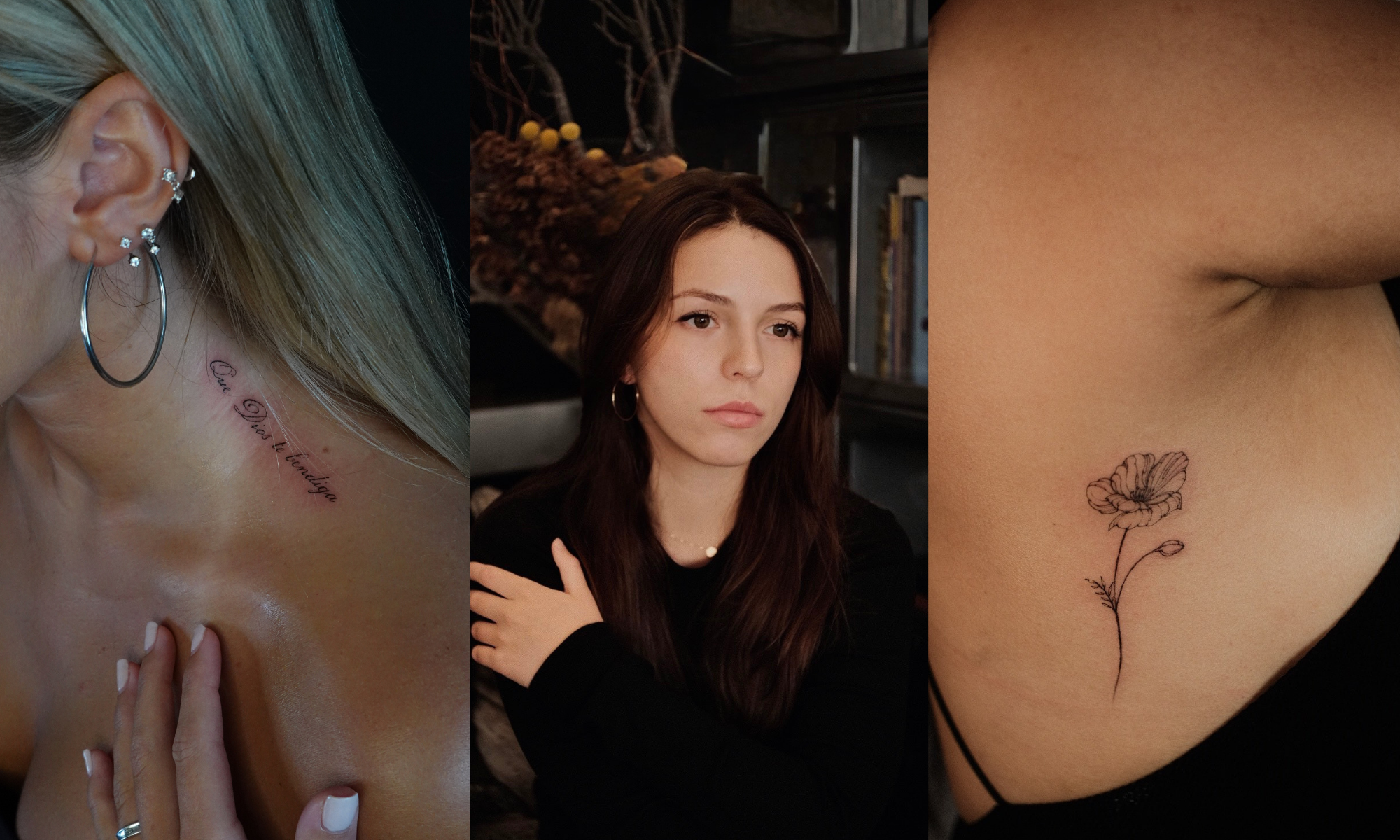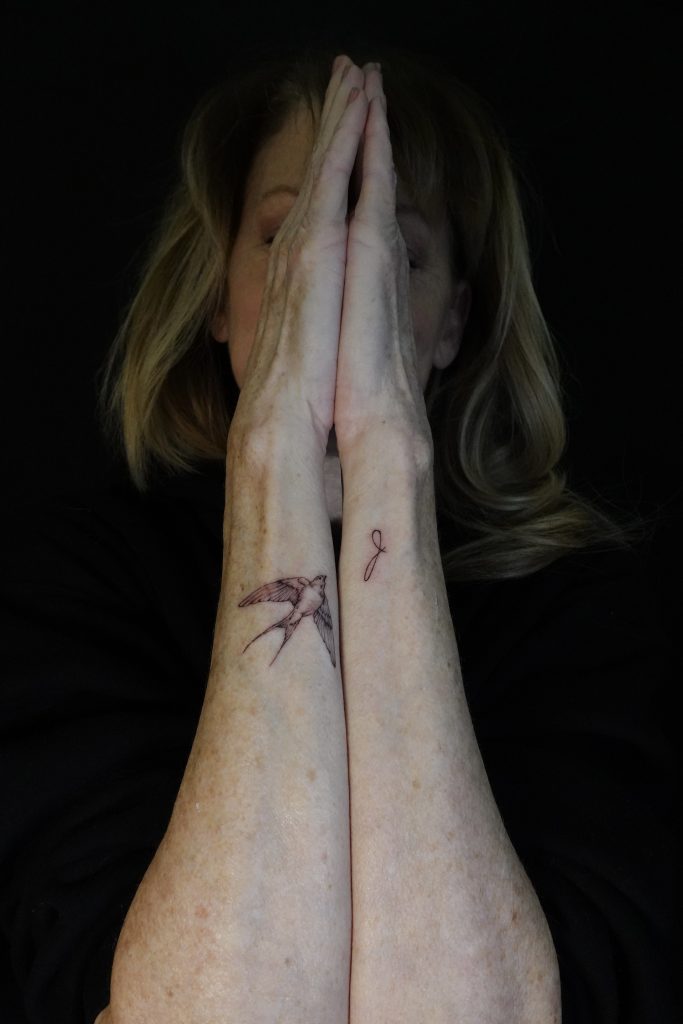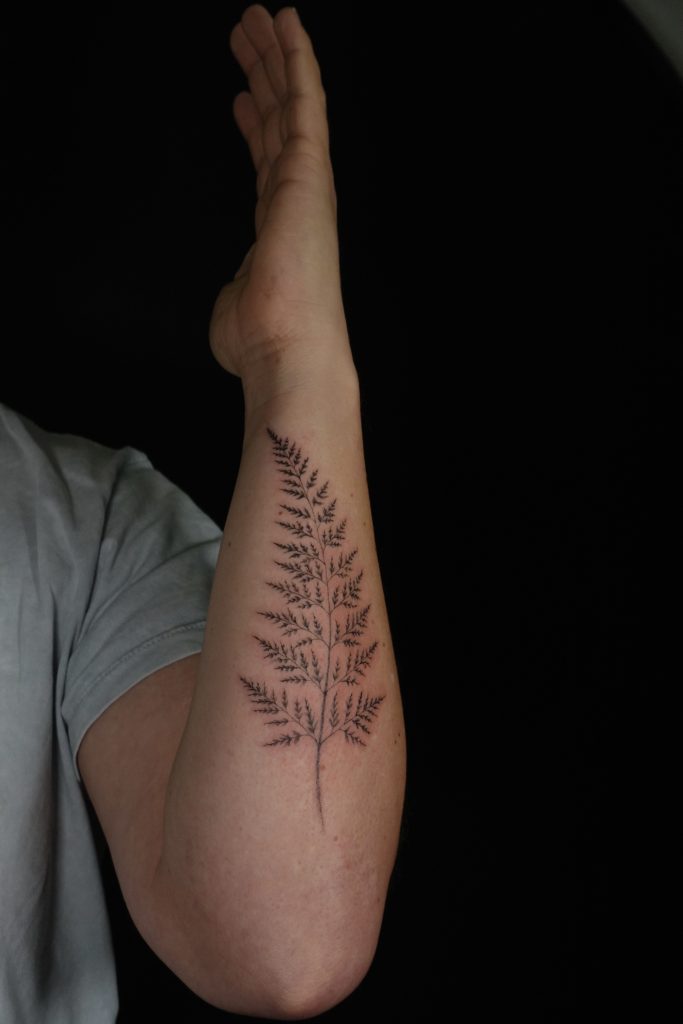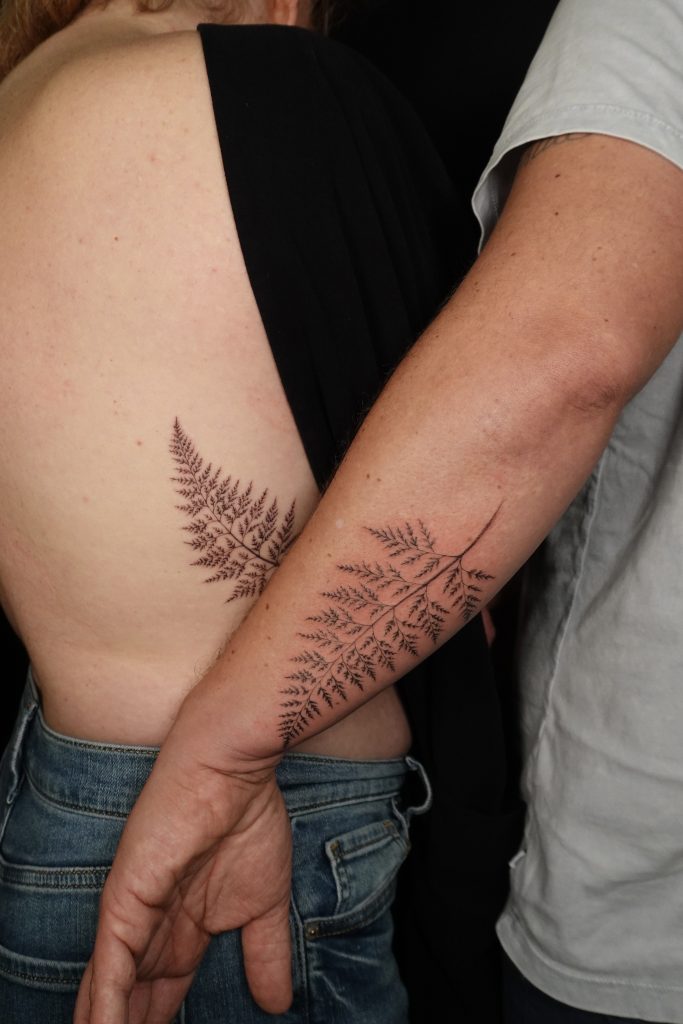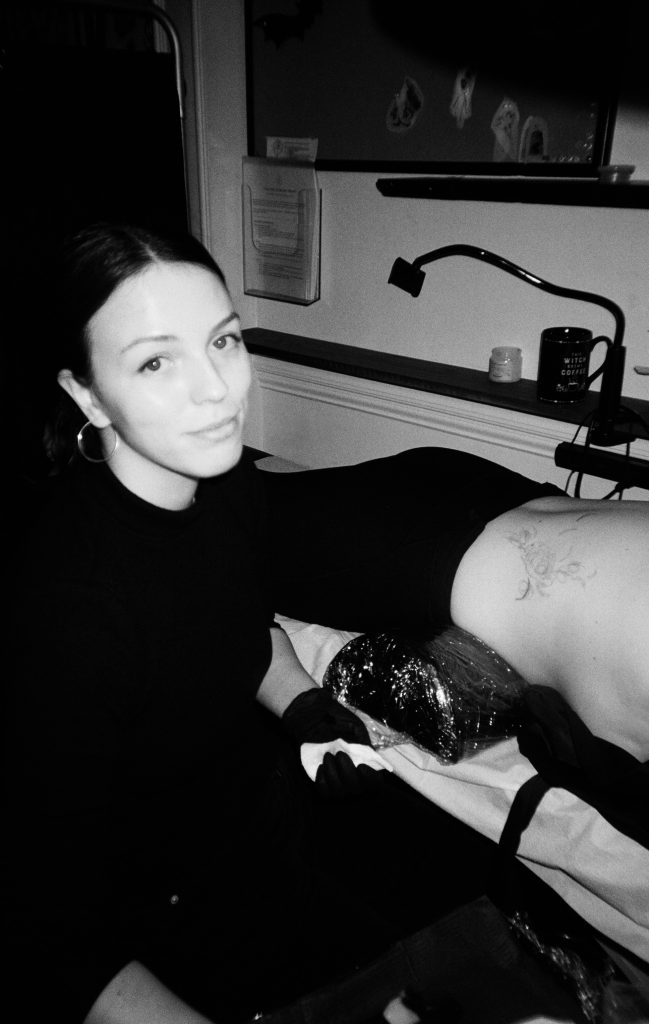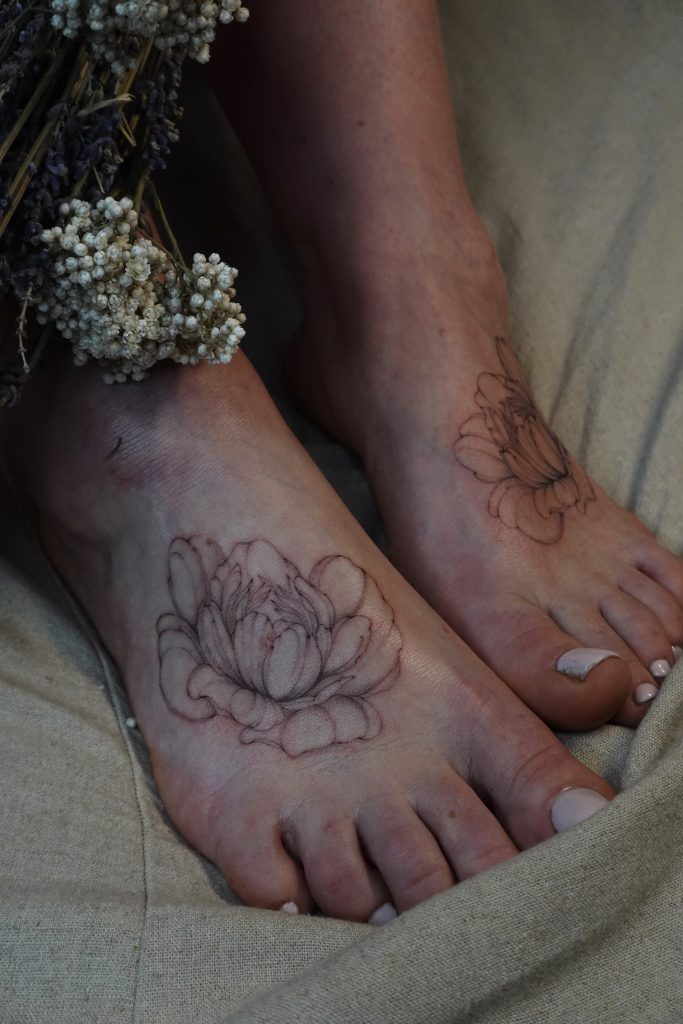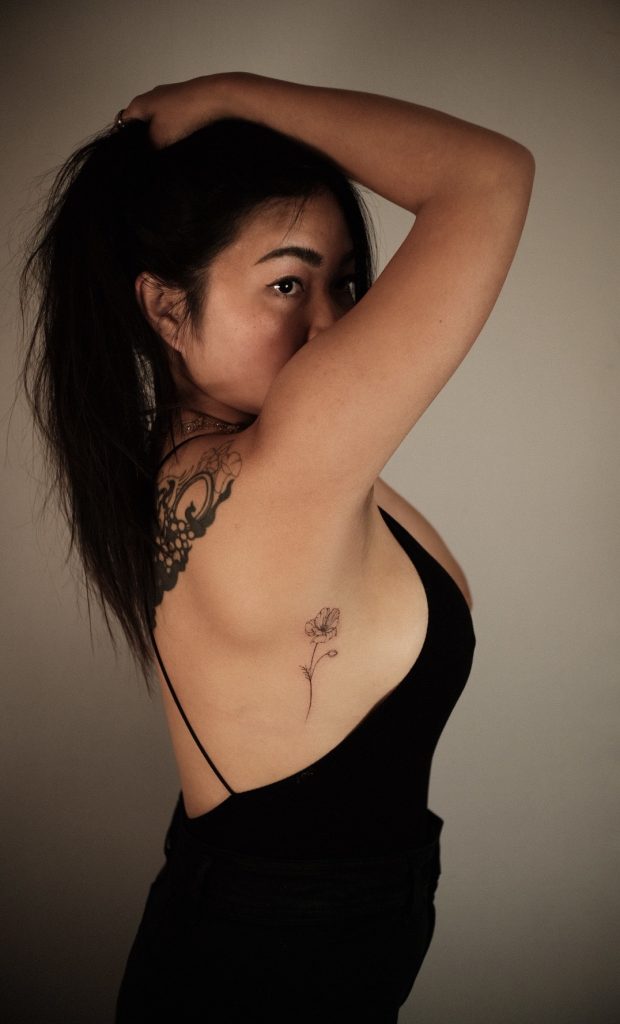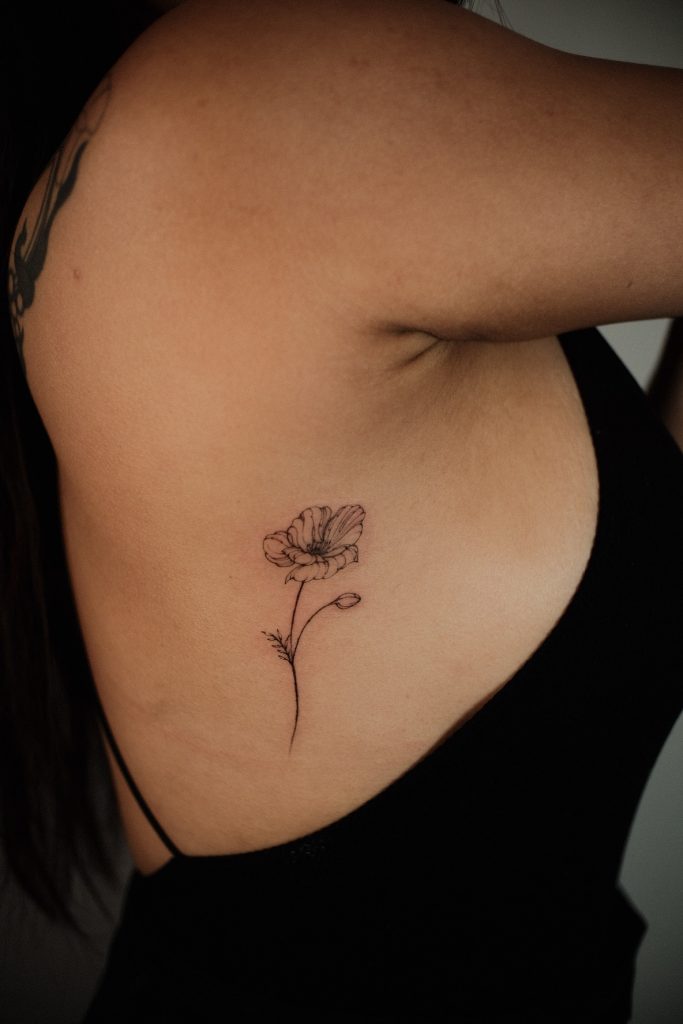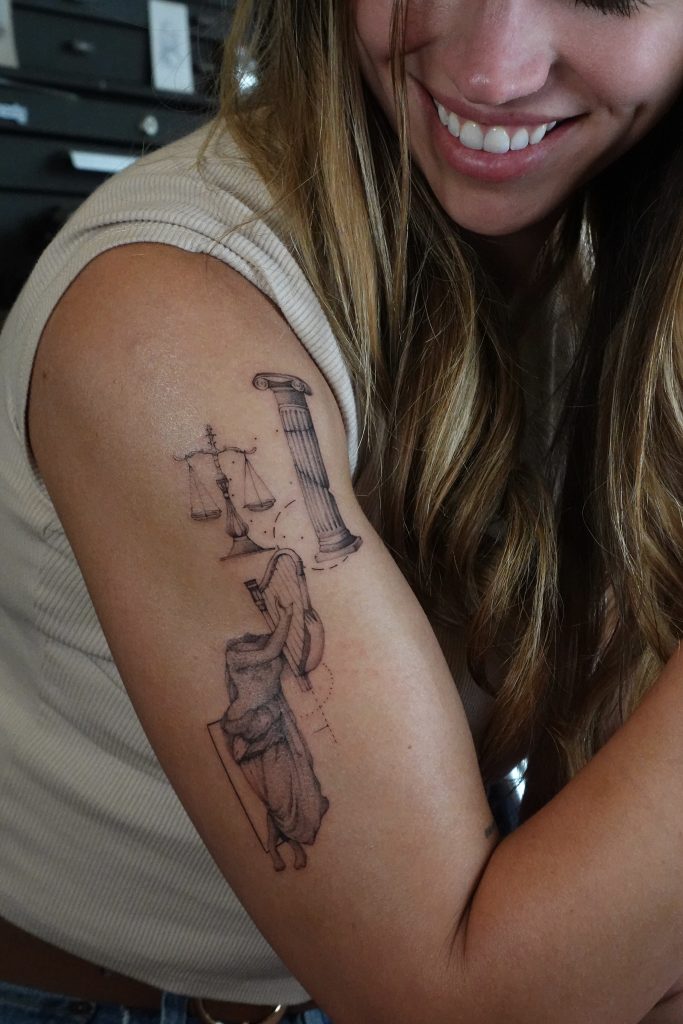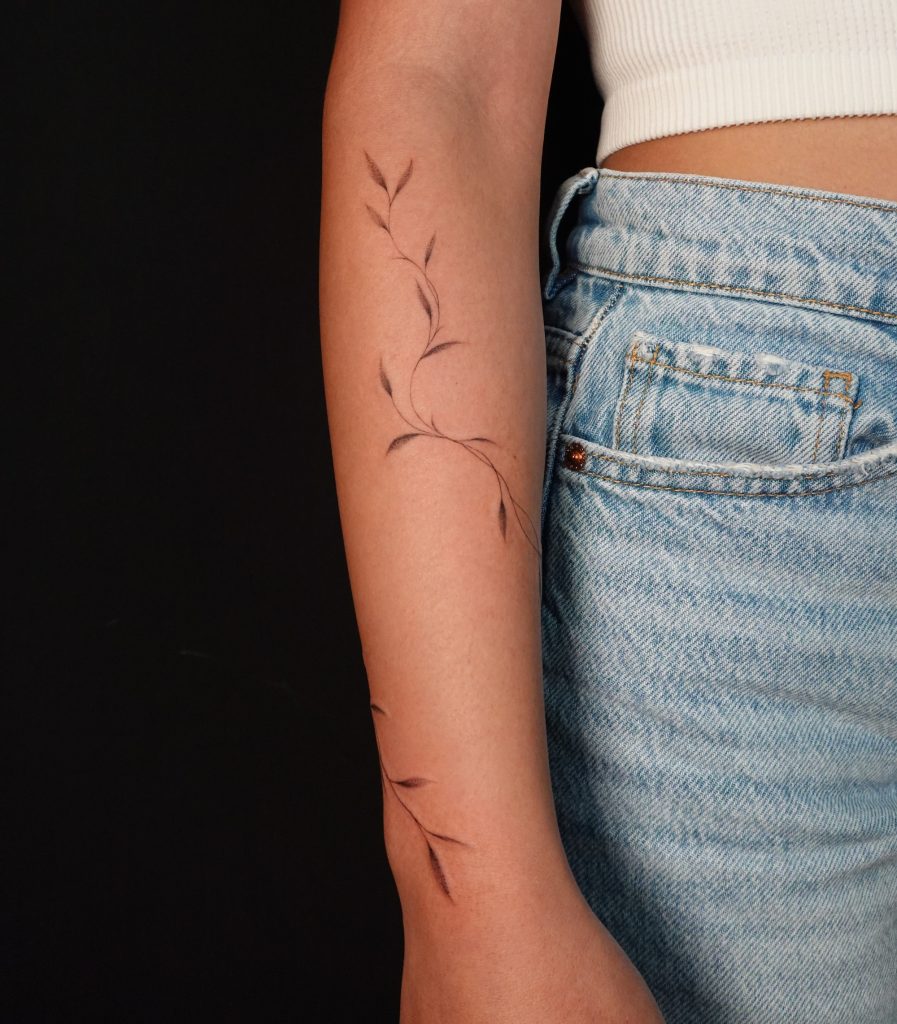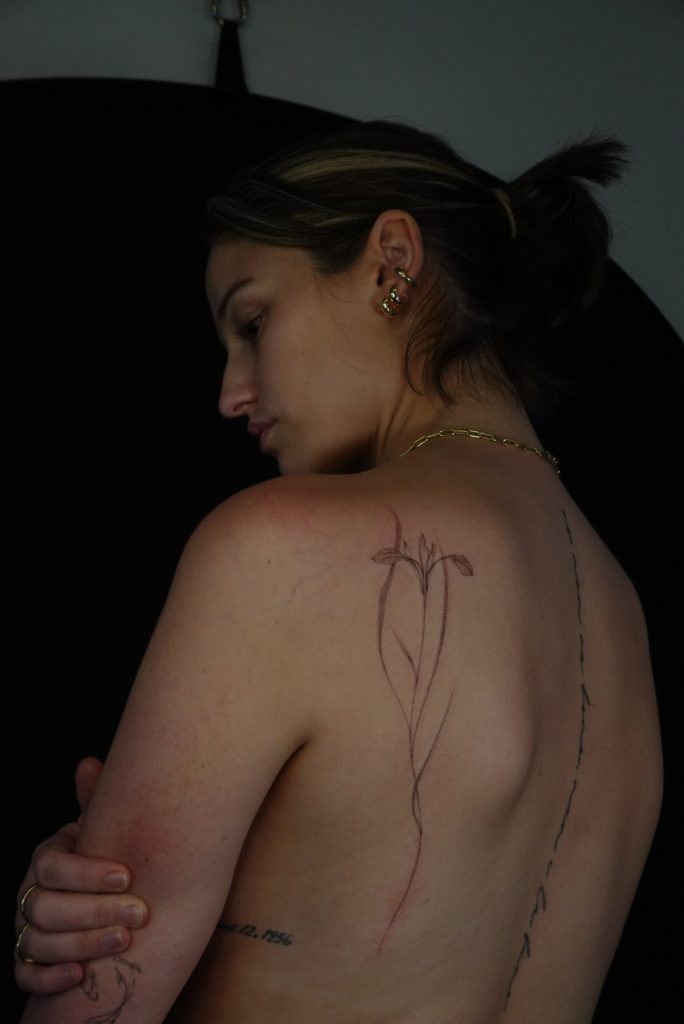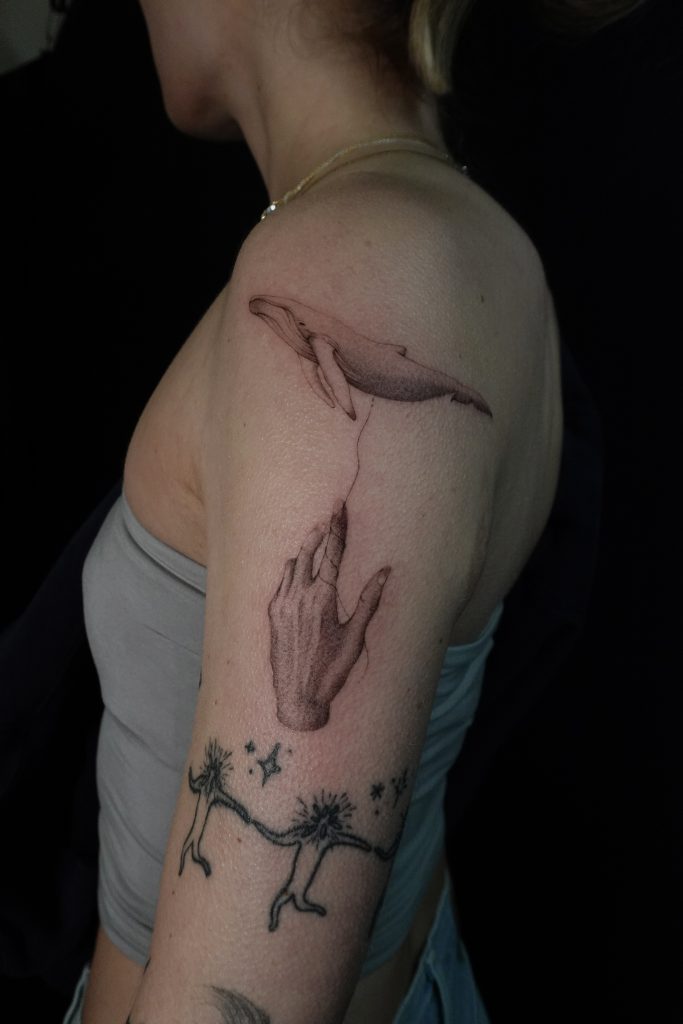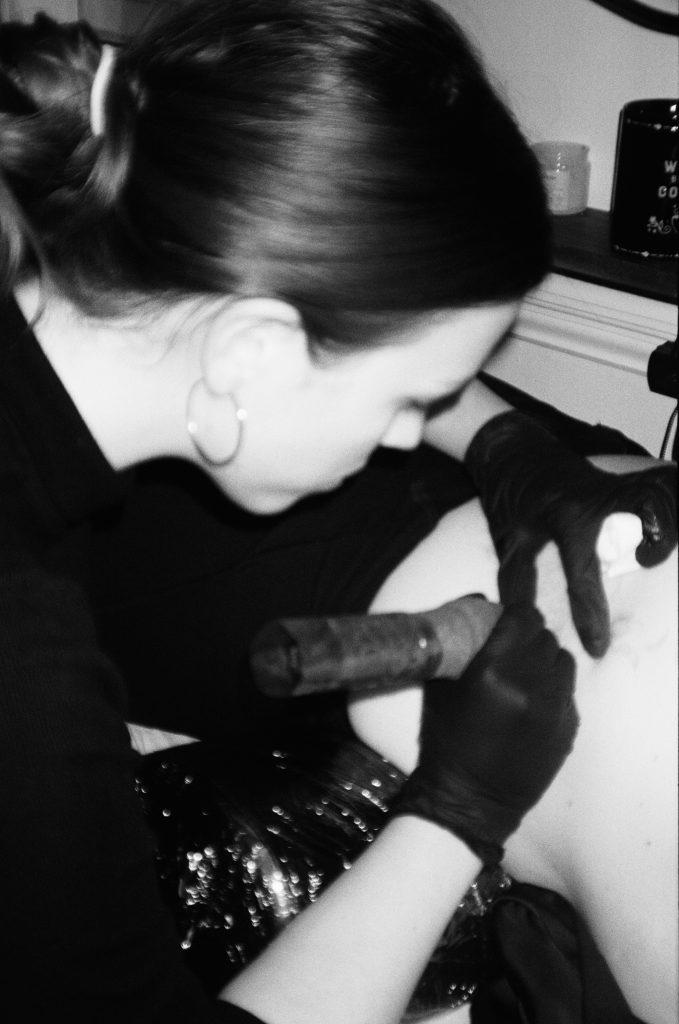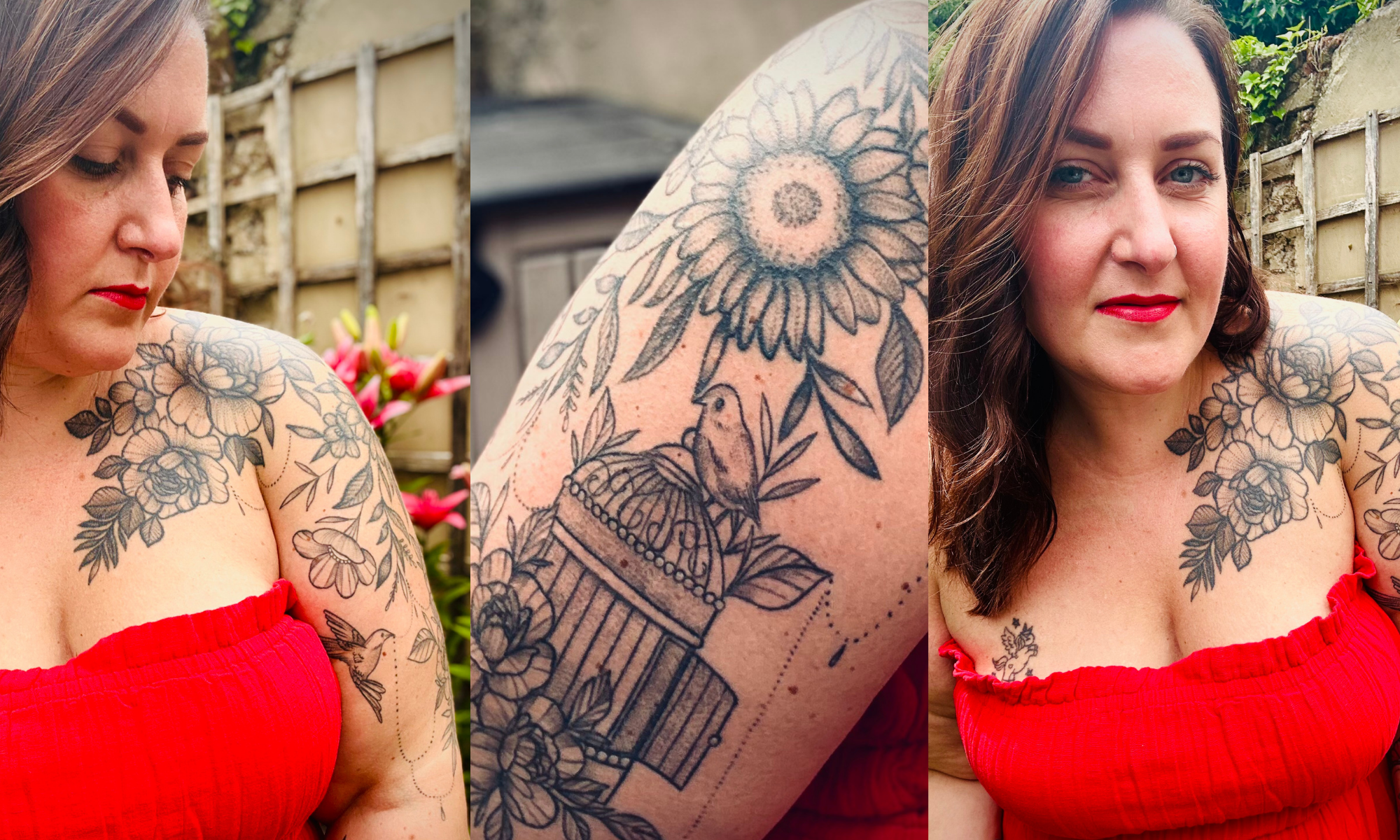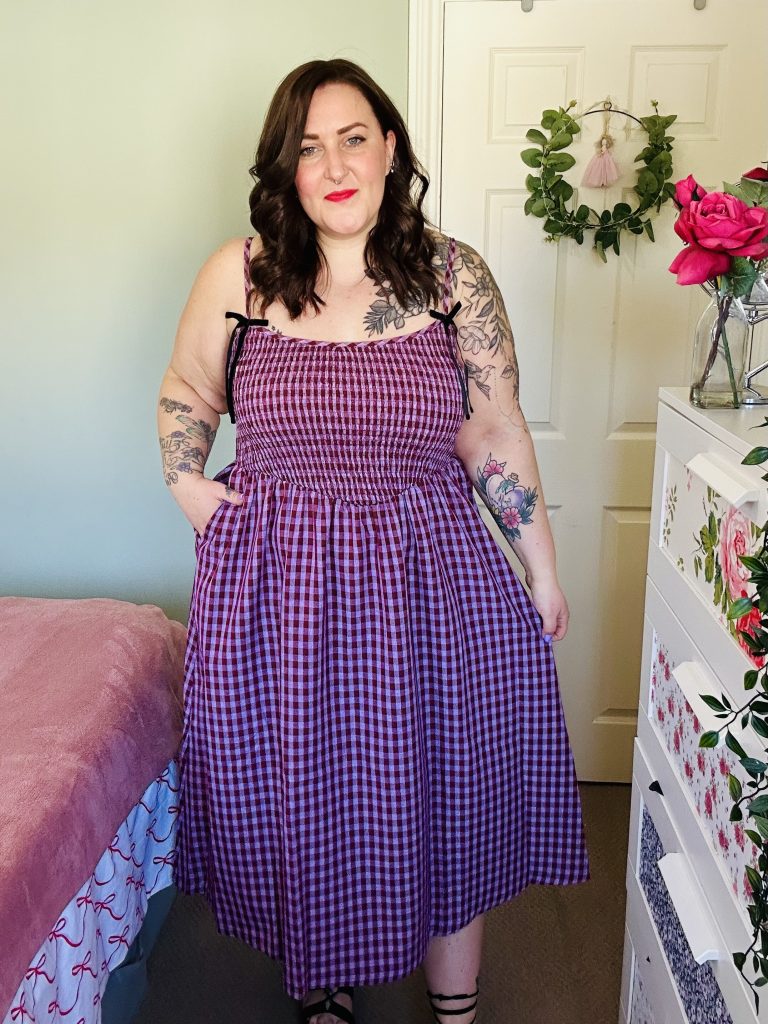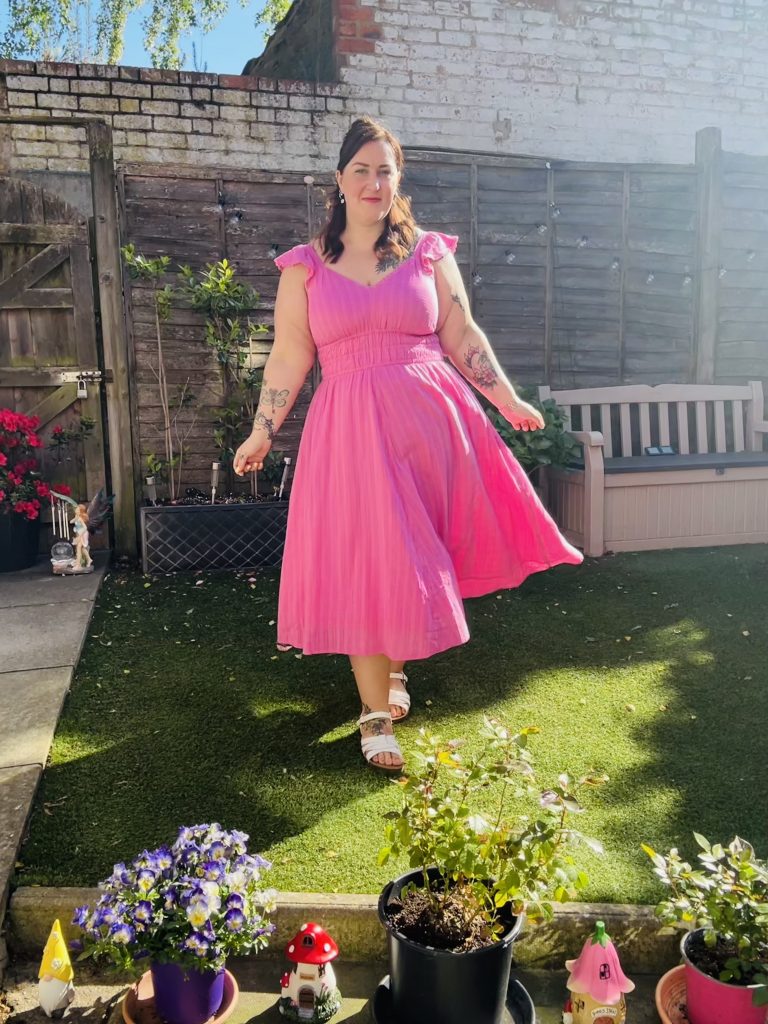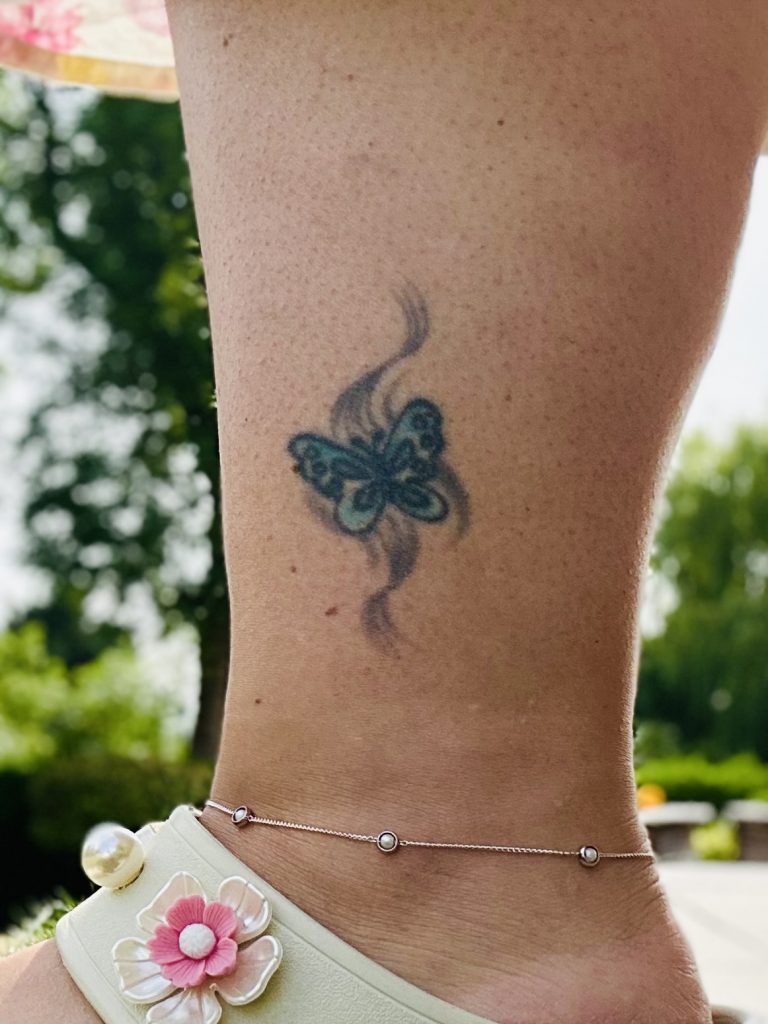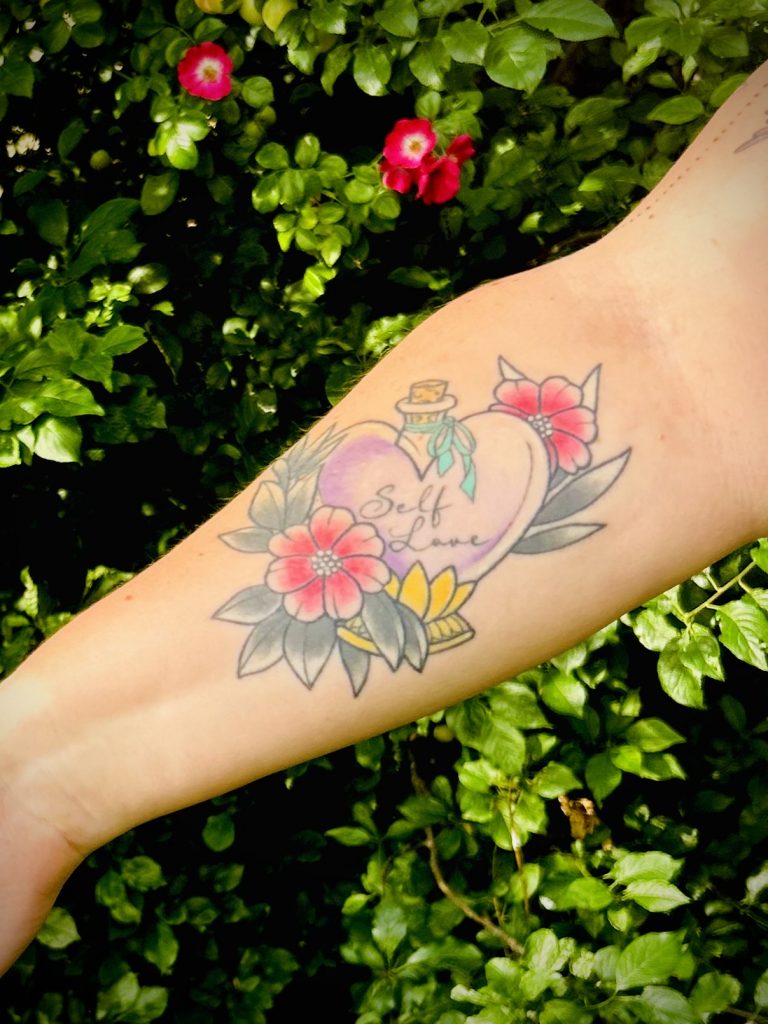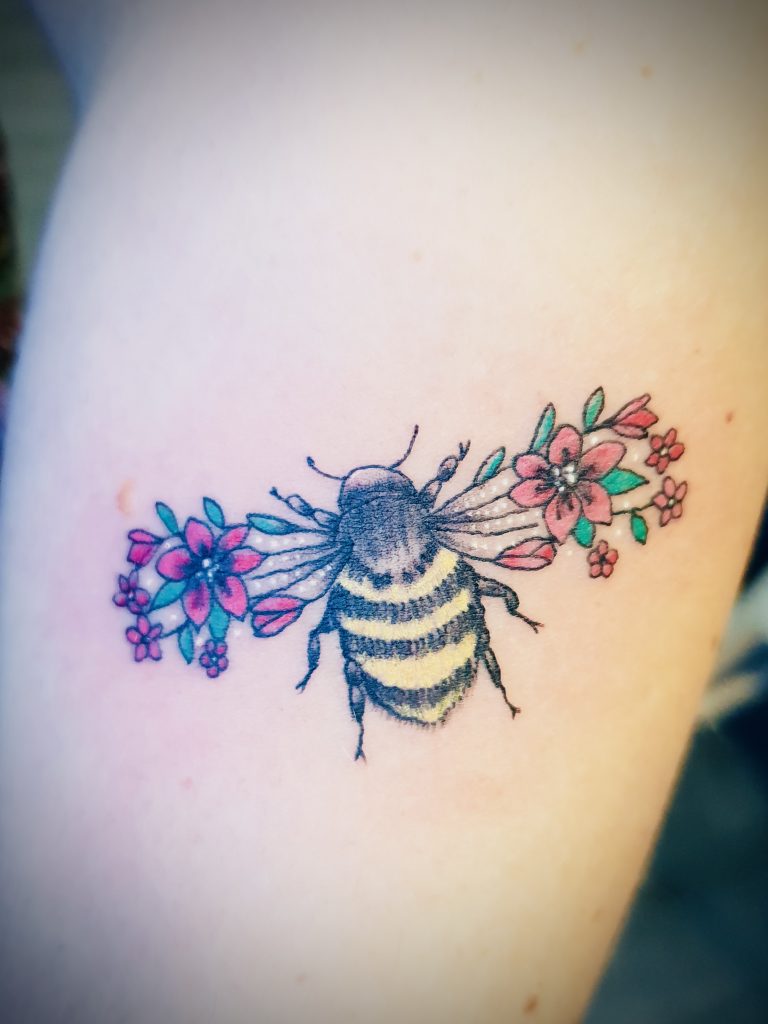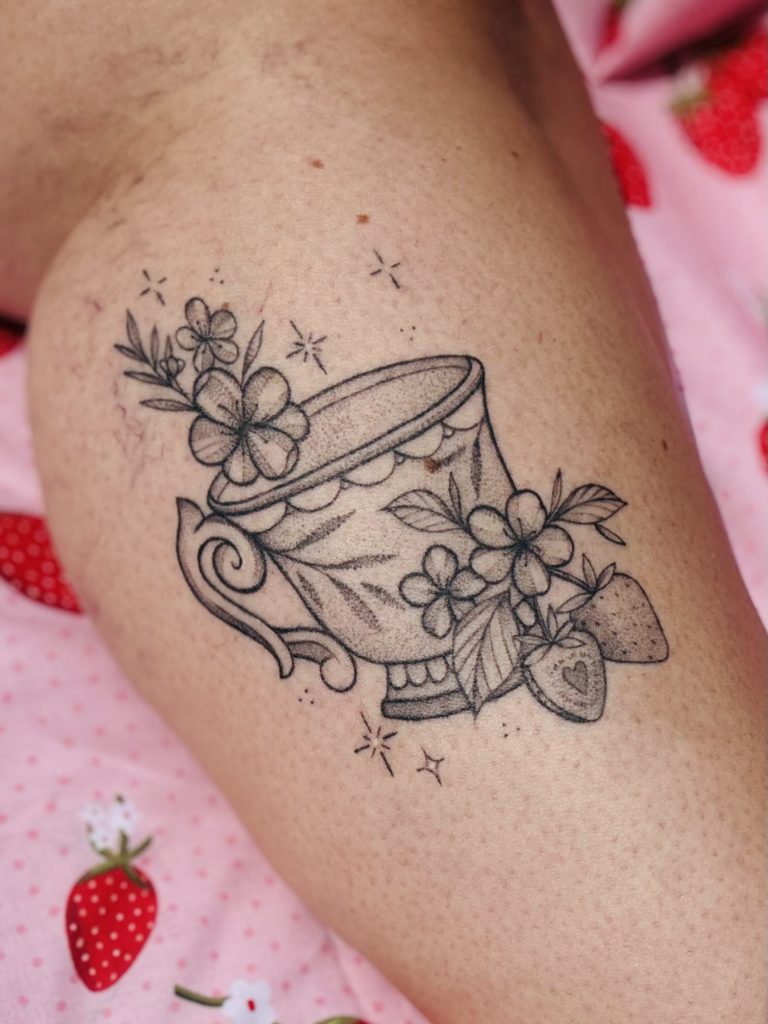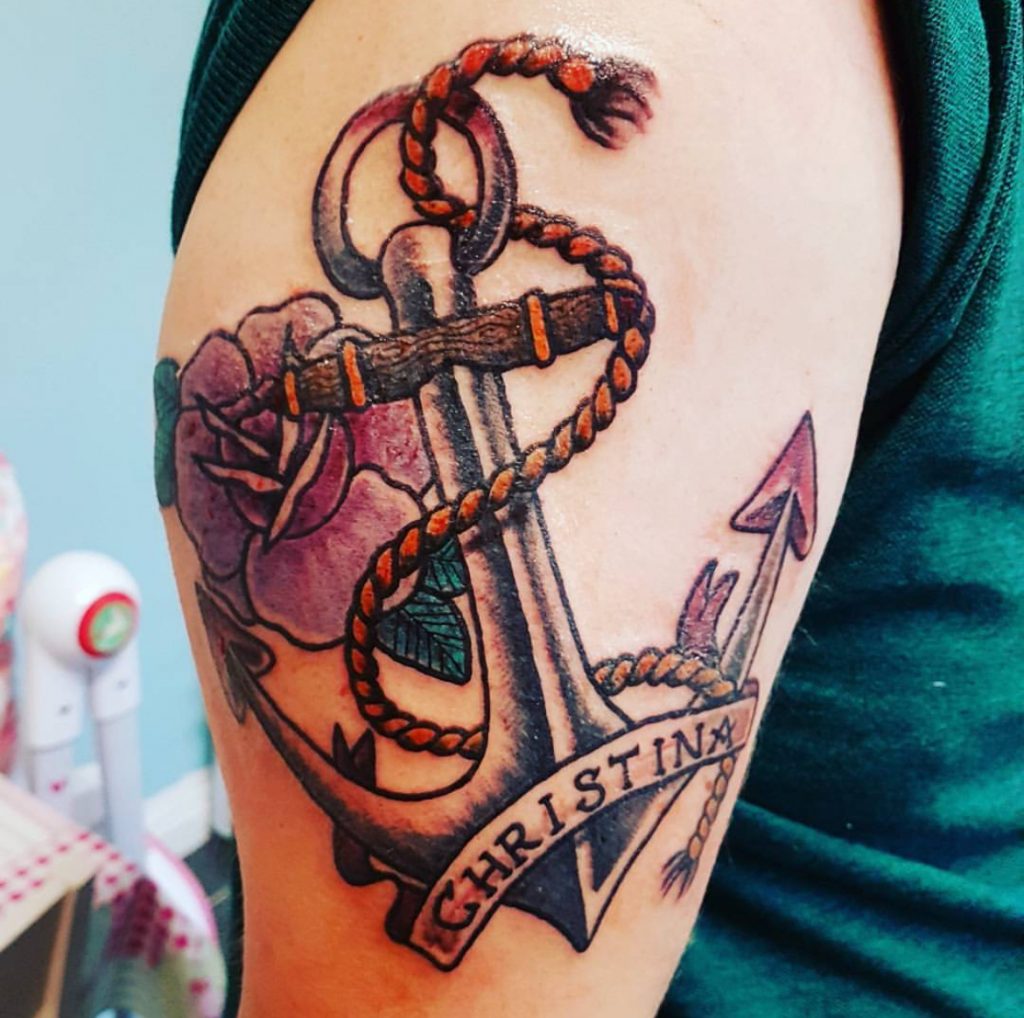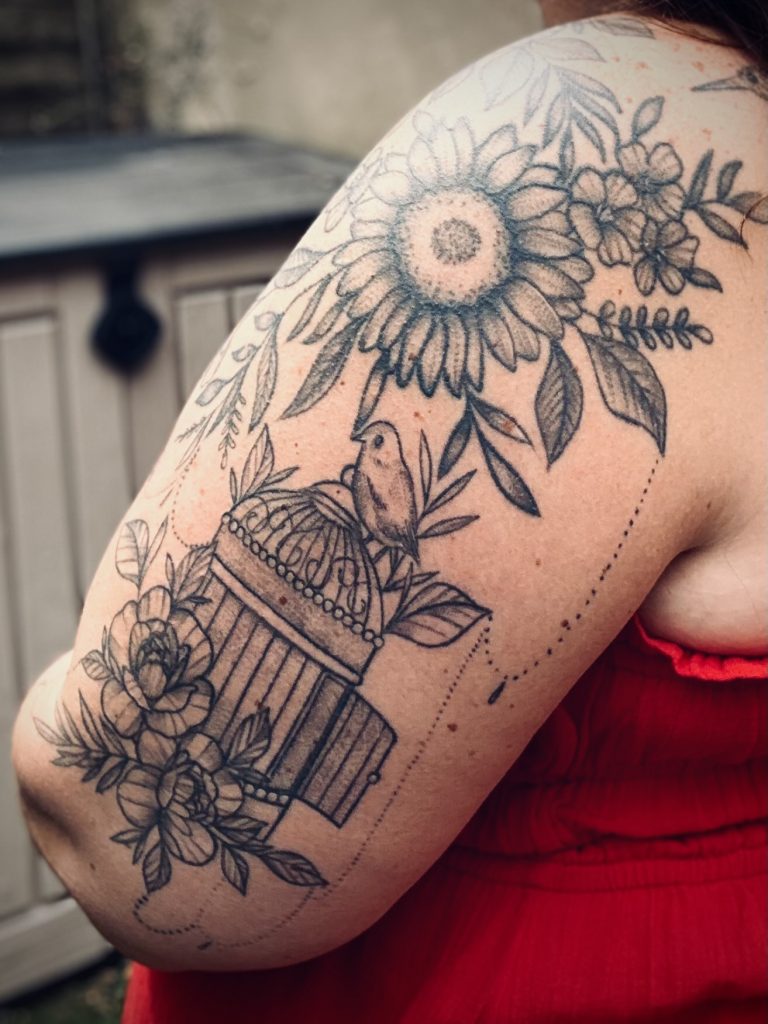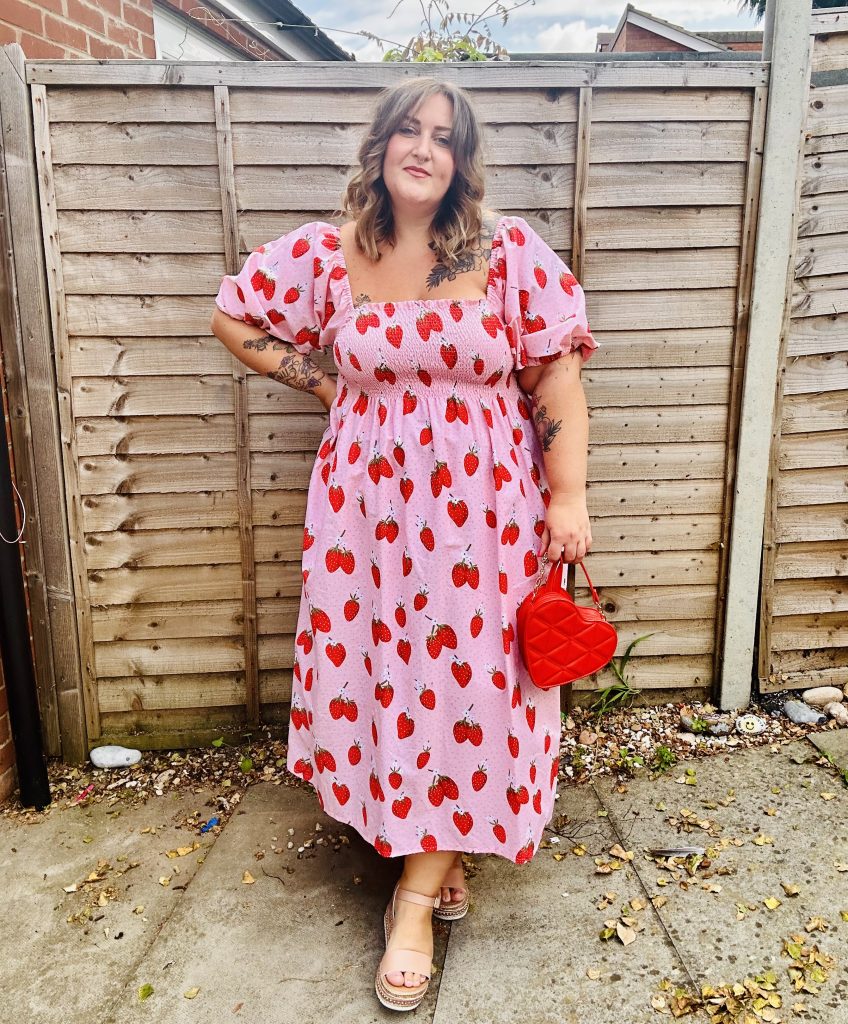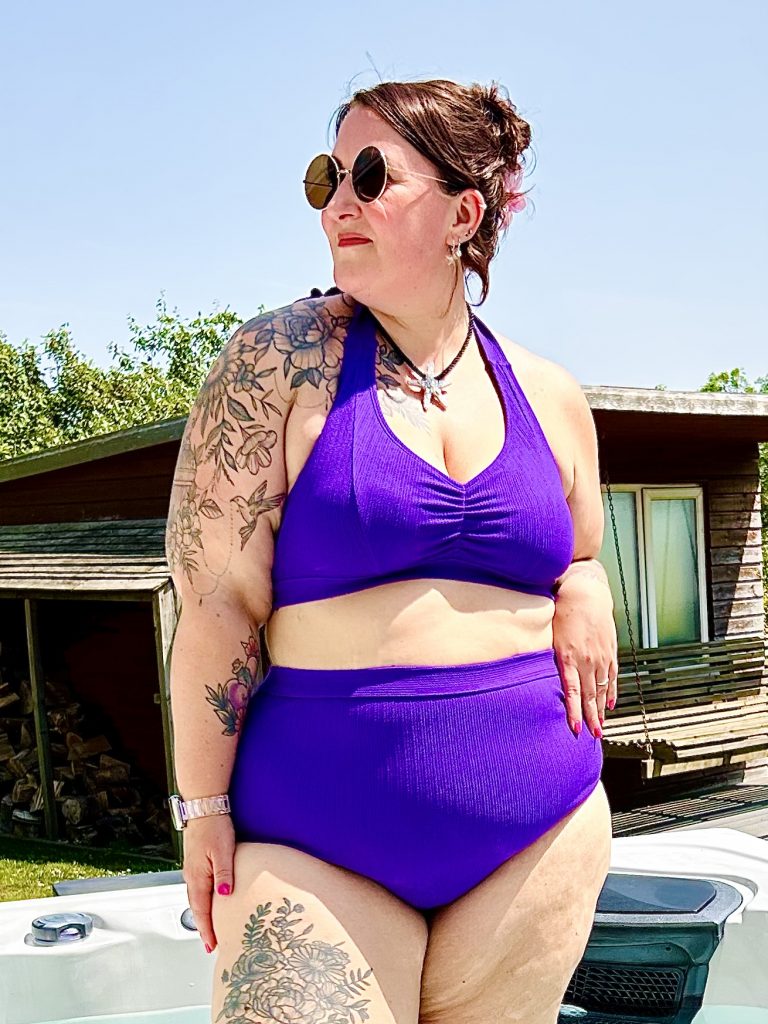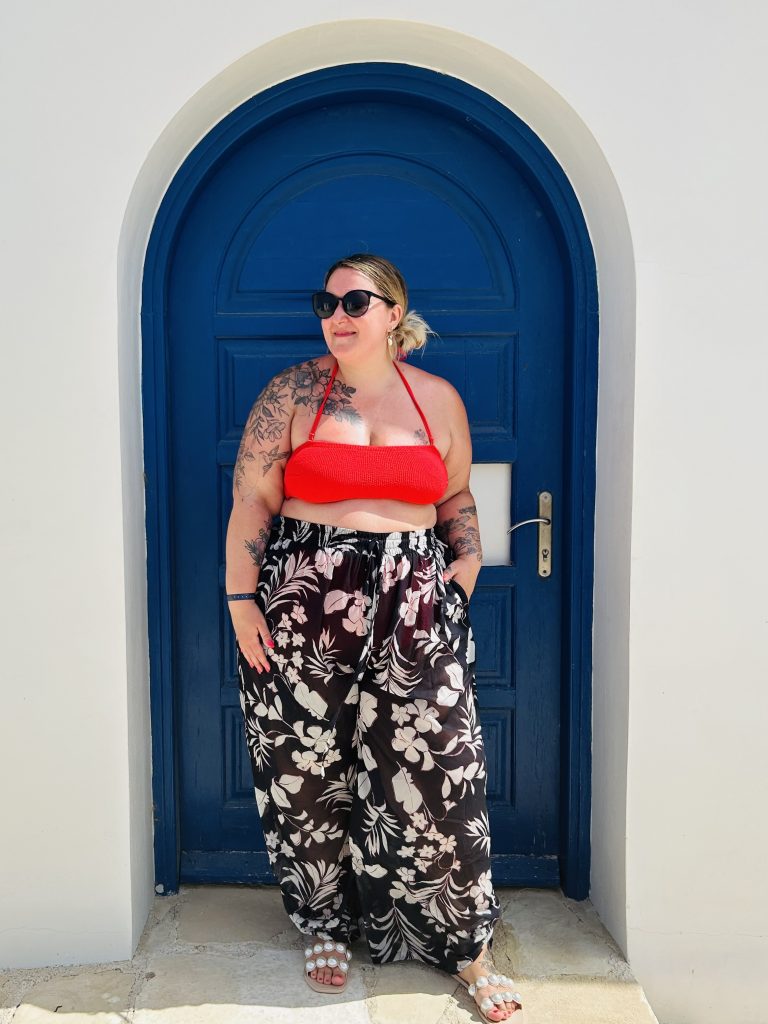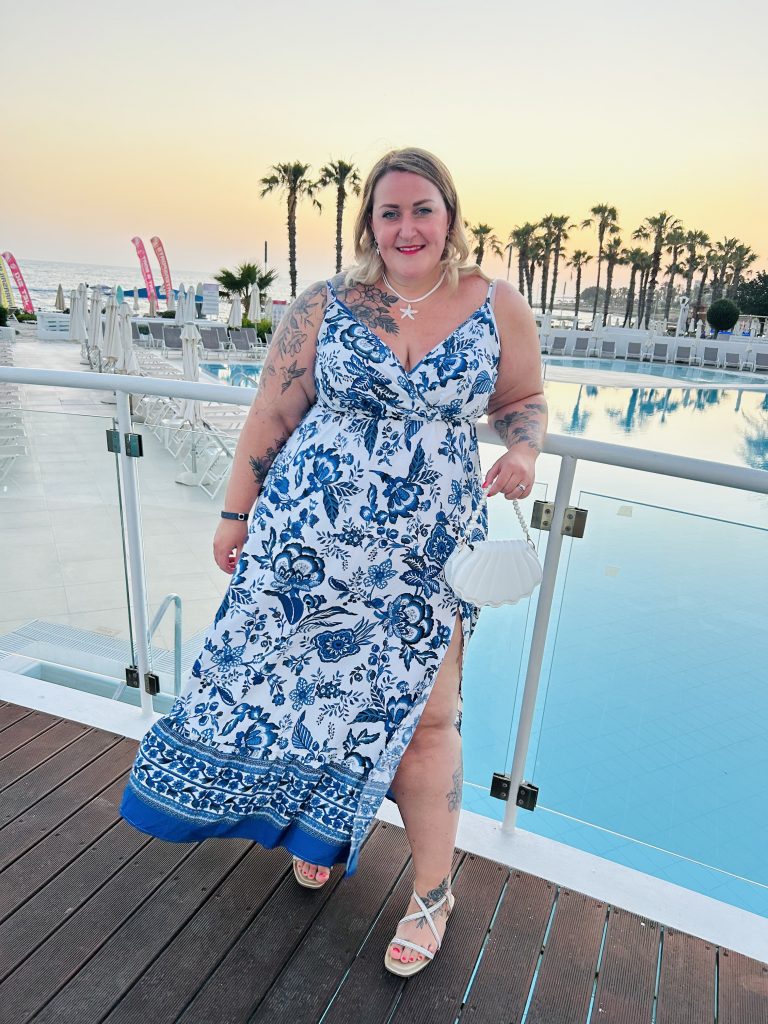Swirling black lines that look like letters and symbols joined together. These abstract tattoos are like works of art, but you can just tell that something much deeper is at play. We’d never seen anything quite like them, these “sigil” tattoos created by tattoo artist Varvara Zelenko (@neohexe.ttt), known as V, we just had to know more… So when V invited us to get our very own sigil tattoos at South City Market in London, we jumped at the chance. So here’s everything you need to know about sigil tattoos and how V created sigils especially for us too…
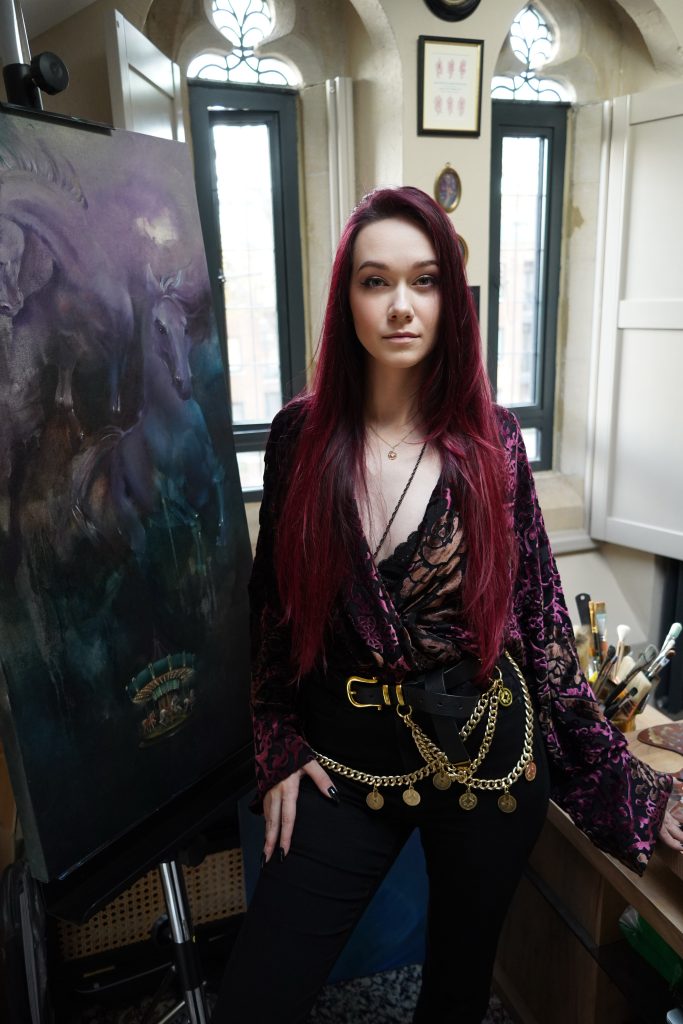
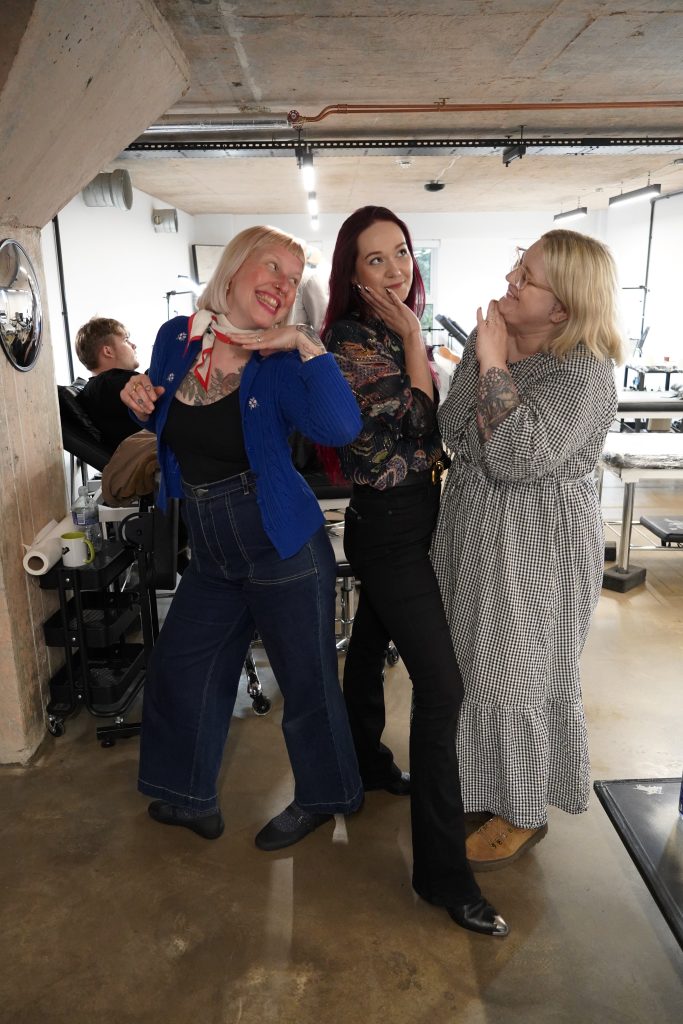
Okay, fill us in, what exactly is a sigil?
The best description of the modern sigil belongs to an artist called Austin Osman Spare [1886-1956] – he called it the “Monogram of Thought”. This captures the idea perfectly: a sigil is an image created by weaving together the letterforms of a phrase or affirmation; it could also be based on a thought. The idea is to take something obvious and rational like written words and transform it into something dreamy, yet still recognisable so your subconscious mind is getting the message every time you look at it.
Where do sigils originate from?
The history of sigils dates back to the middle ages, where you’d often see them in magical spellbooks – which were called grimoires. It reflects the desire to conceal what must not be spelled out – for example, there are sigils that represent angelic and demonic entities, powerful spirits whose names should not be pronounced outside magic rituals. By the 20th century, the rise of psychology studies transformed sigils into a medium for tapping into the unconscious mind. This fundamental change made sigils a personal manifestation tool that we recognise today.
So you turn sigils into tattoos? How does that work? How did you get the idea to create sigil tattoos?
I was always into symbolism and deeper meanings – even before I started making sigil tattoos, my art was layered with hidden messages. On the other hand, I grew up with esotericism by my side as it runs in the family. Eventually, I was looking for a way to integrate all of this into tattoos and sigils came to mind.
When I started offering sigil tattoos, I didn’t know anyone else offering anything similar, so I wasn’t sure if I would connect with the right audience and people would get on board with this concept. At the end of the day, you have to submit a phrase without knowing how your sigil will end up looking – it takes a certain trust and courage. What started as a side project ended up being my main specialisation, I was totally overwhelmed with the response, personal stories and gratitude.
“I tattoo the words in the way I see them”
Tell us more about your upbringing and how esotericism has been part of that. Do you practice spiritually now or keep in touch with this part of your life?
My mum has always lived in tune with the celestial world, planning family events like weddings or haircuts around astrological timing. She taught me that there are forces beyond what we can see or understand. Along with this, she’s deeply knowledgeable about natural remedies, herbs and fungi. We even have a centuries-old burns healing balm recipe passed down from grandmother to granddaughter, and I’ve witnessed its remarkable effects. These practices always felt natural to me. There were no rituals, magic spells or crystal balls – just the understanding that nature and its laws play a significant role in our lives, and it would be foolish not to acknowledge that.
“I always ask my clients, how did it make you feel?”
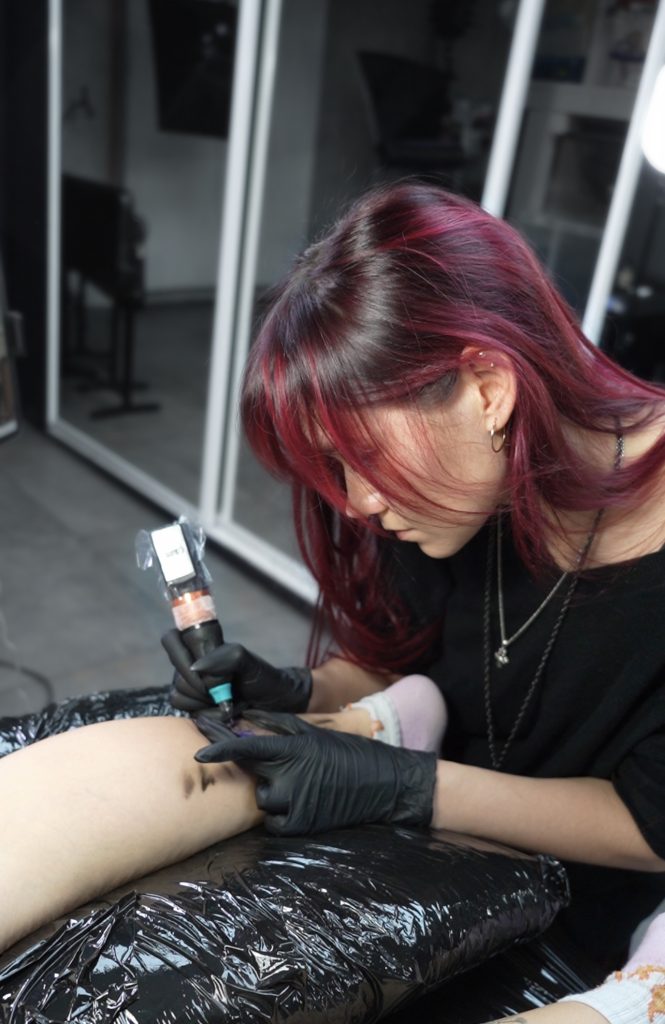
Would you describe yourself as someone in tune with their intuition? Do you draw on this to create the sigils?
Oh yes, absolutely. I always trust my ‘gut feeling’ in life and in art, and I regret it whenever I don’t. When creating sigils, I stay open to whatever comes up during the process and let it manifest naturally.
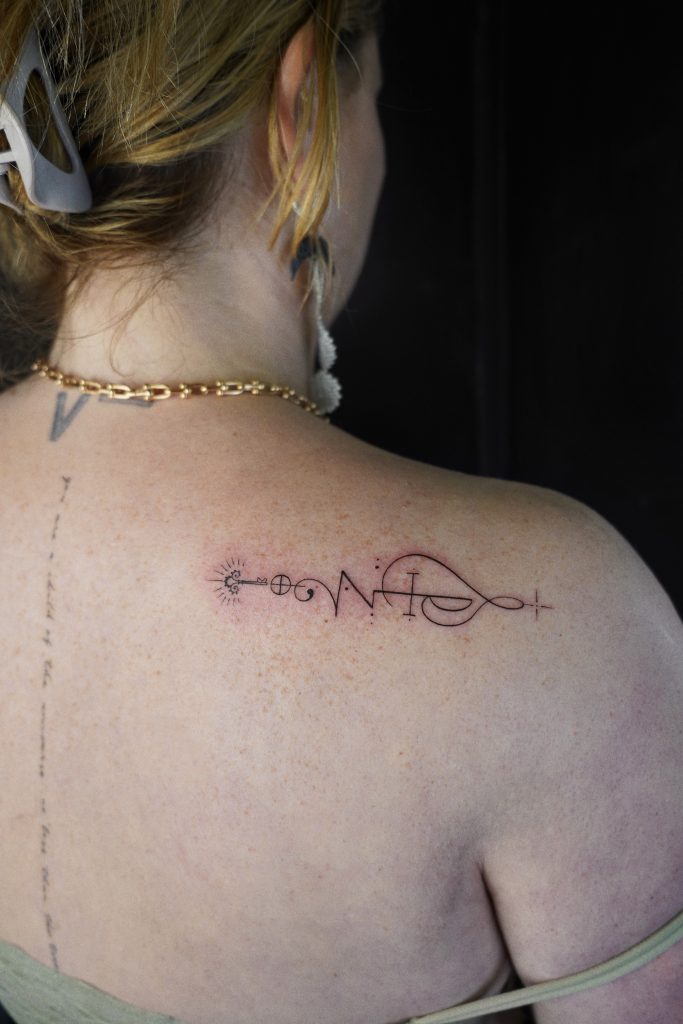
What do sigils mean to you?
I like to view sigils from a psychological standpoint. How a sigil can help someone with personal growth, be it spiritual or material. Often, transformation starts before the sigil is crafted. It starts with the person forming their affirmation that is worthy of something that will be on their skin for the rest of their lives, at this point you connect with your true self and discover your needs. I like being a part of this journey for my customers and creating meaningful, transformative art.
“A sigil is pure energy“
Why would someone get a sigil?
There are a few different reasons. All my customers agree that sigils are a great way of tattooing a message without anybody (apart from them) knowing what it truly means. The purpose of the sigil tattoo varies greatly. Sometimes it’s a memorial tattoo – words that someone dear once told them; other times, it’s an uplifting and encouraging affirmation; more often than not it’s a reminder of what a person survived and how their strength will carry them on. Protection and guidance is another popular theme.
“I remember every single person and their story“
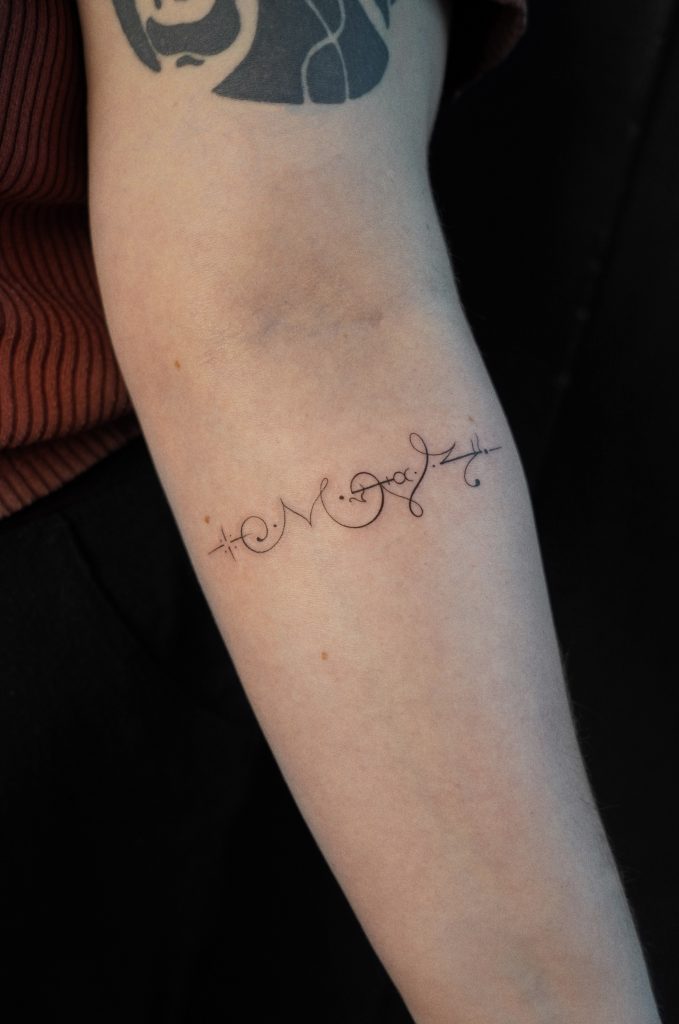
How does the design work? What’s your process?
Once the phrase for a sigil is confirmed and I receive all the details and understand the purpose and meaning of it, I’d usually meditate on it for a few days before starting to draw. The main thing for me is that it comes out naturally. If I have to force it and think hard it ruins the intuitive flow of it. I’d redraw a sigil as many times as needed until a smooth flow is achieved. From a visual perspective, I use my knowledge in typography (I used to be a graphic designer), there are laws of deconstructing letters in a way that keeps them recognisable.
How can readers work with you to create their own?
Start by filling in the form on my website, even if you don’t have an idea for a phrase you can communicate the general message and your story – I’m always happy to help shape your mind flow into an affirmation. Once that’s done, you’re halfway there!
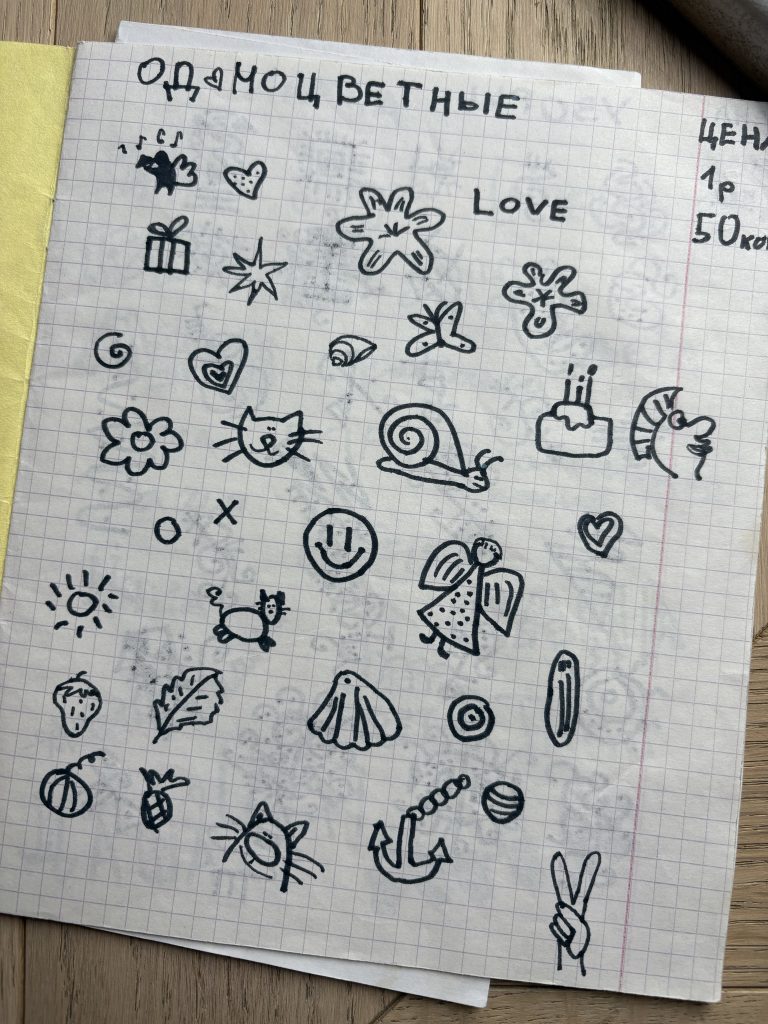
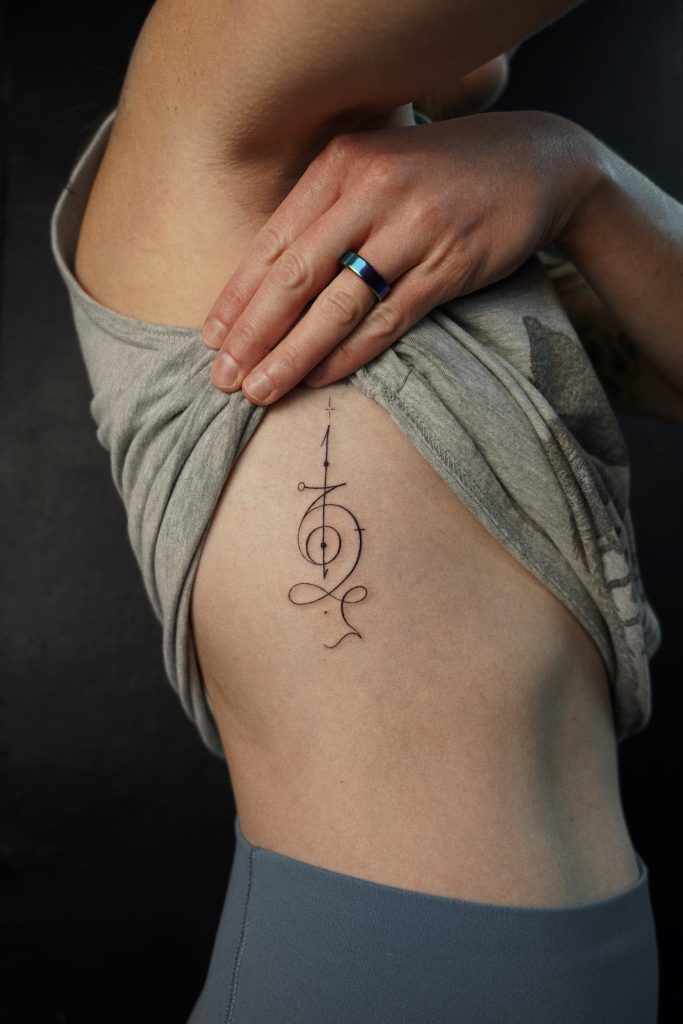
“It feels so much more than tattooing… you connect with people and they tell you their stories…”
How many have you done so far? Do any in particular stand out?
I’ve done over 300 sigils in the past few years. Not all of them are tattooed by me – I offer commissions for customers abroad, who want to get their own personal sigil.
I’ll be honest, when I decided that to create a truly meaningful sigil, I had to hear the personal story behind each request, I didn’t anticipate how deeply the emotional weight of these stories would affect me. The stories of trauma and vulnerable experiences people have been through sometimes linger with me for weeks. This is one of the most important and unique parts of the sigil creation process – people open up about their dreams, fears, insecurities and pain. Deeply personal stuff. And it stays between me and them, because no one else knows what their sigil means. One might ask, ‘Why put yourself through this?’ But I’m not seeking an easy life – this raw honesty is sobering and profoundly human.
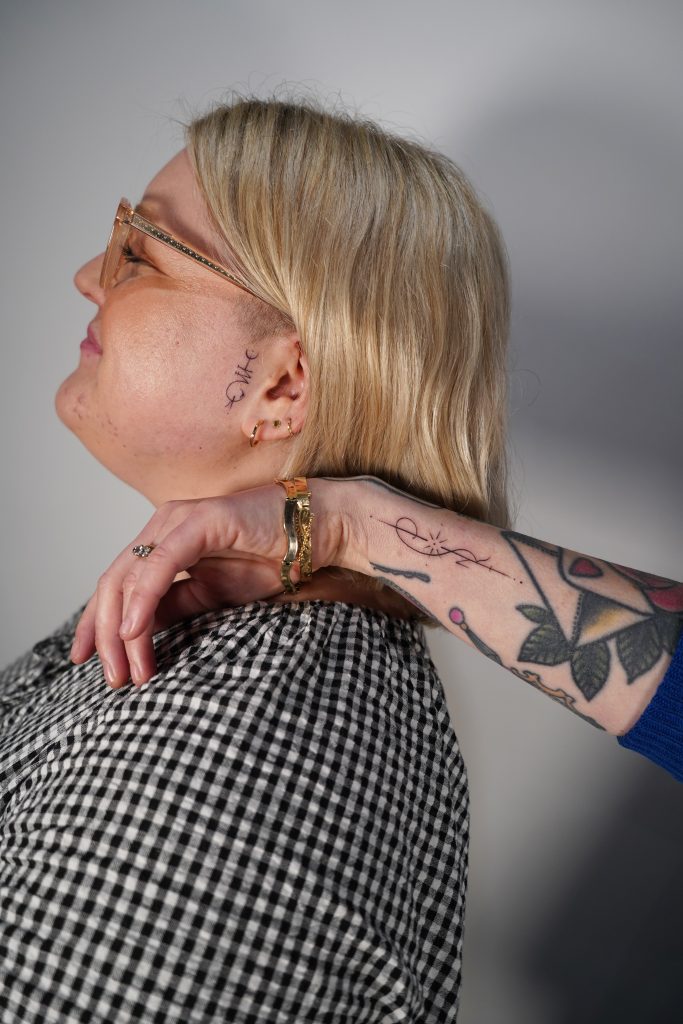
How do you care for yourself after? How can those getting tattooed take care of themselves after a sigil tattoo if the meaning is trauma related?
I meditate, journal, take long walks, sit in silence, practice mindfulness, paint – all the usual things that would help one decompress and reset their mind.
First and foremost, I’d recommend talking to someone if your emotions are overwhelming. Take care of your mental health and give yourself space to process your feelings. Second, if your sigil is trauma related you’re already in a healing path because you have sought tools of overcoming that trauma rather than dwelling on it. It’s important to remember that this tattoo is a symbol of personal transformation and strength, the moment when you chose your future self.
Do you have a sigil tattoo?
Shh…it’s a secret!
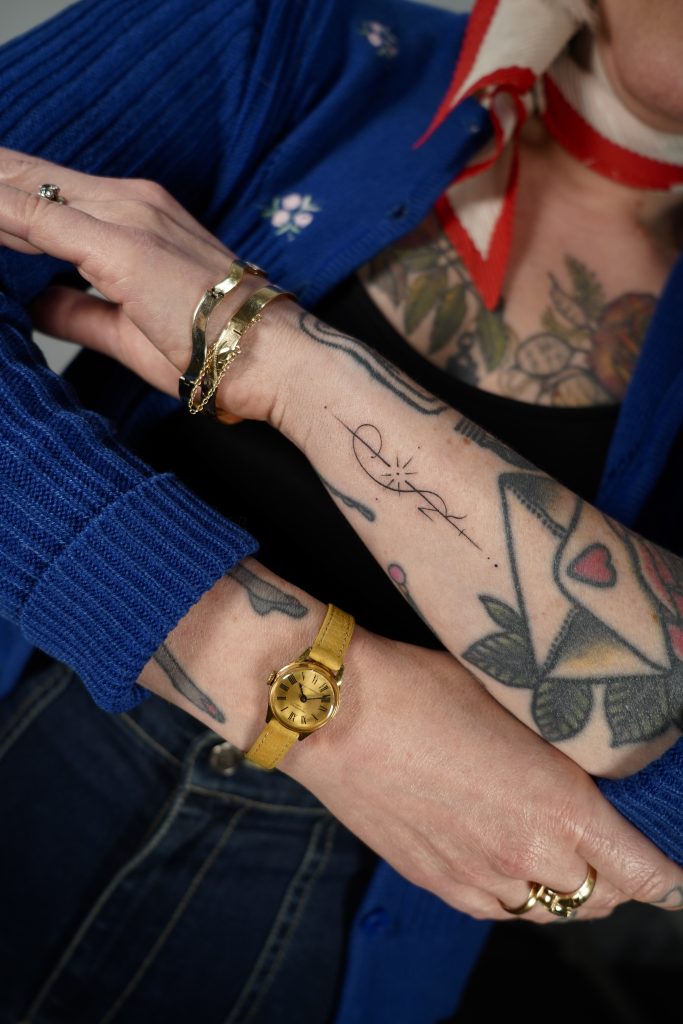
Alice: “I’m in a period of contentment in life and I’ve had a good year – but there’s also things I’m unsure about… Instead of picking anything specific from my past, present or future desires, I wanted V to create my sigil around a favourite word: Serendipity. I love the meaning, a sort of happy accident. Like when we find something we’ve misplaced when we‘re searching for something else – an unexpected but fortunate discovery. Sounds silly, but I first fell in love with the word when I watched the 2001 film of the same name. Just the most beautiful romcom about two strangers who bump into each while Christmas shopping and fall in love. They part and then let fate bring them back together… I want my sigil to make me open to seeing the good in the unintended, remaining open to whatever my future might hold – whether it’s something I ‘chose’ or not…”
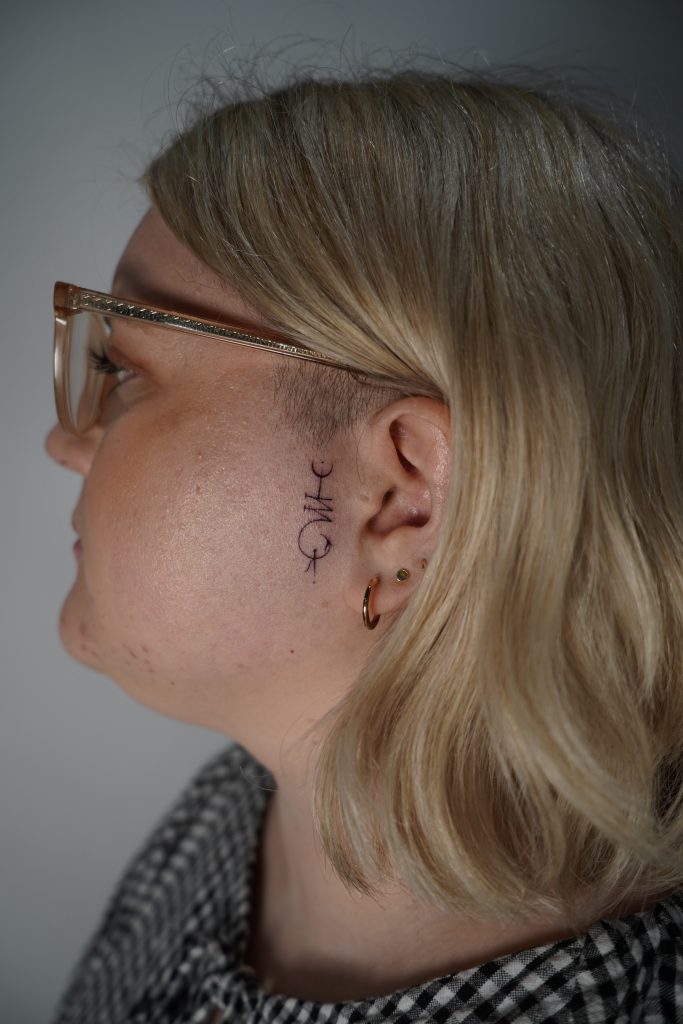
Rosalie: “For my sigil, I really honed in on how V had described them (on an Instagram post ) as a reminder of your purpose. That’s why I chose the word ‘mother’. I also asked her to include my daughter’s star sign of scorpio, which seemed to combine perfectly with the visual spell vibes of sigil tattoos. As soon as she sent me the design, I knew it needed to go on the left side of my face and it looks so delicate yet strong nestled by my ear like a piece of jewellery. Getting tattooed by V was such a lovely experience, I felt so relaxed and she was so gentle – not what I thought getting the side of my face would be like at all! I already feel more at peace and calmer, I can’t really describe it. This tattoo feels like it has always been part of me, which is exactly how I feel about my daughter.”
We had the most magical time with V! Now it’s your turn to get a sigil tattoo. Fill out V’s enquiry form and she’ll create a unique secret message just for you!
